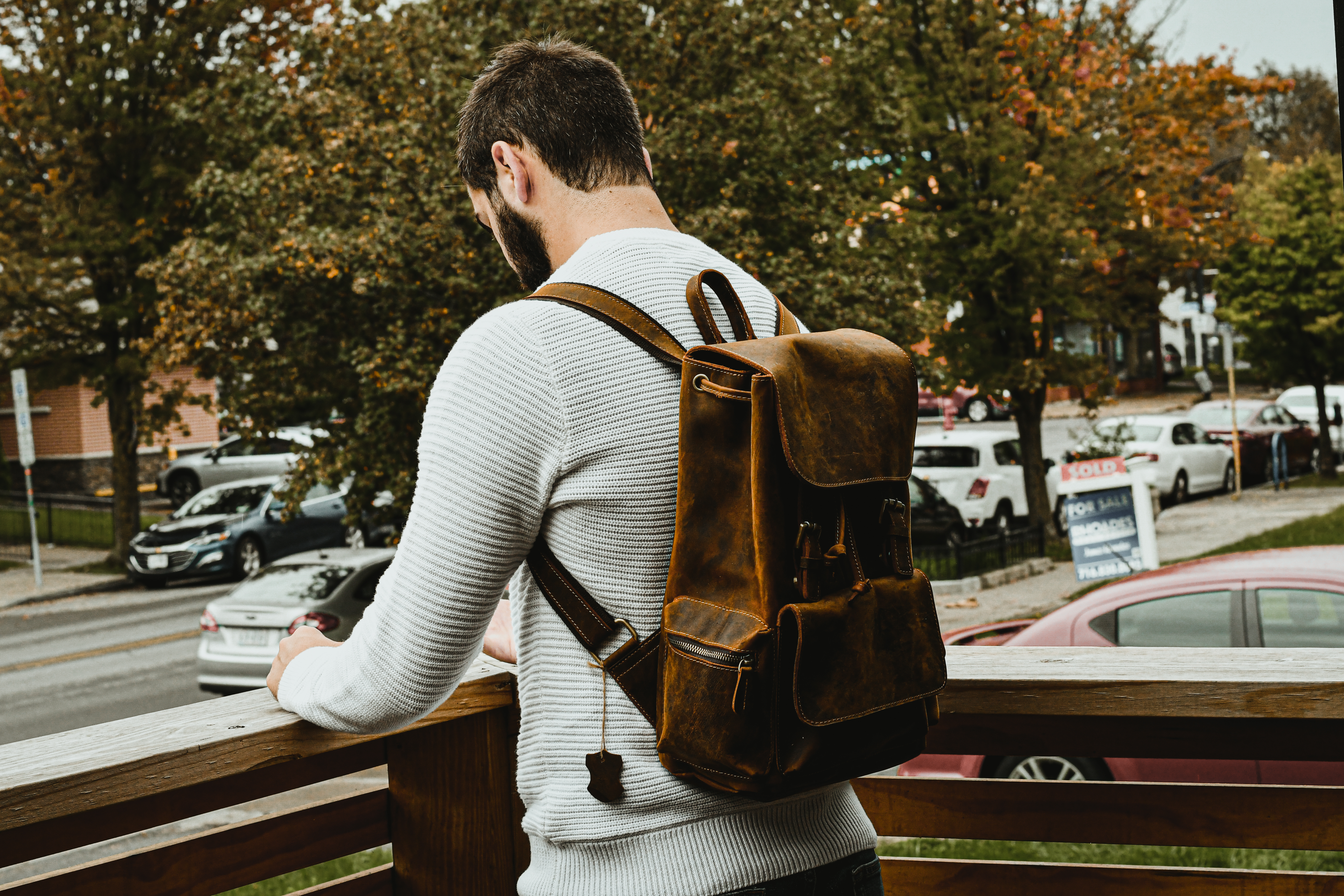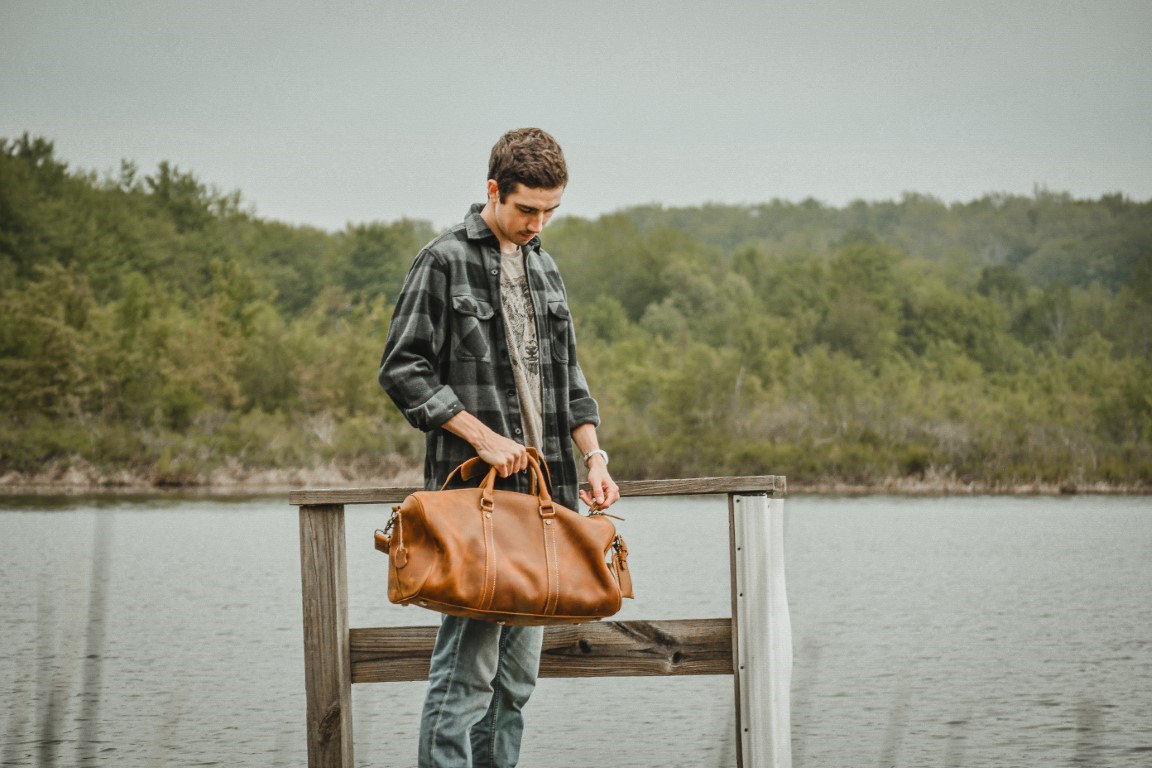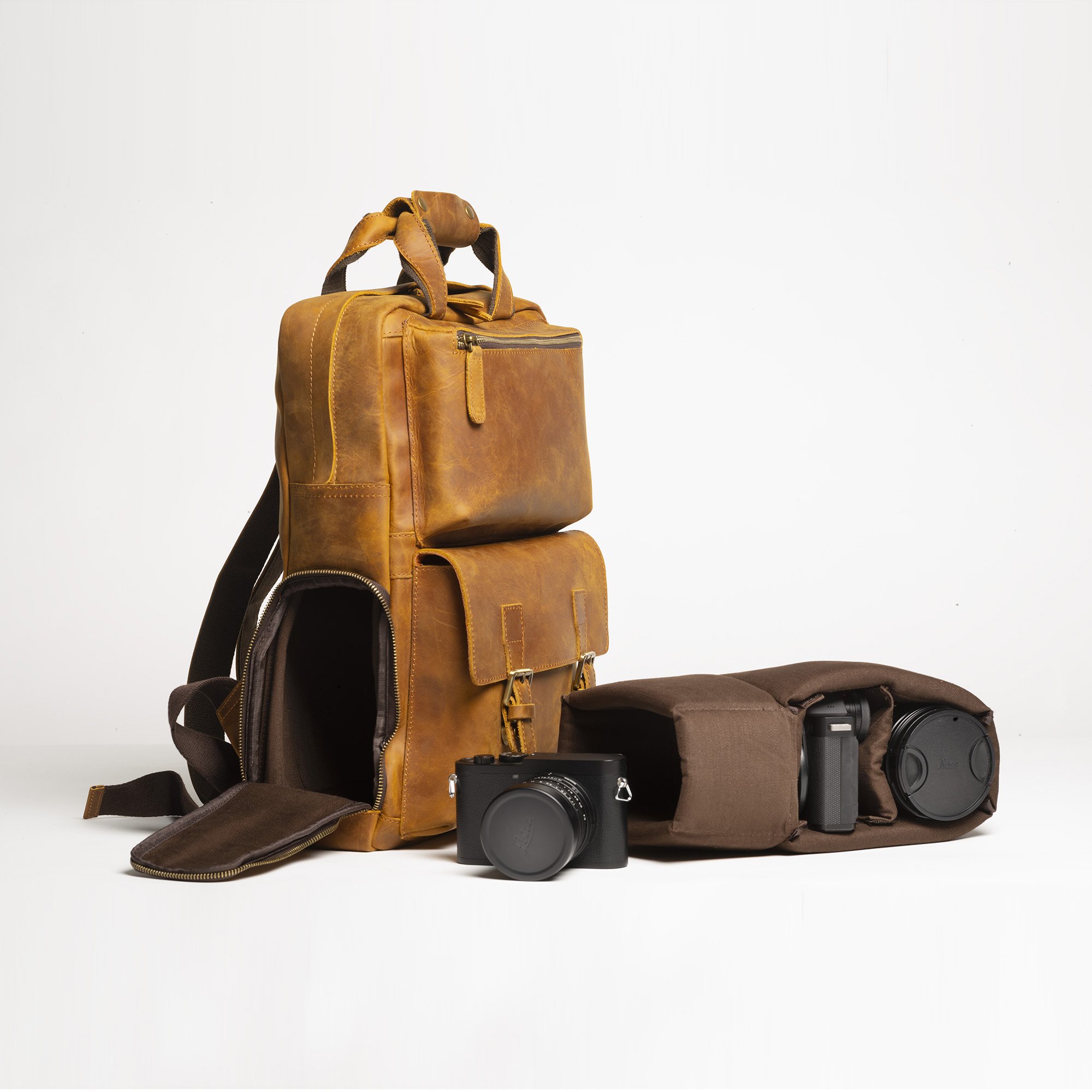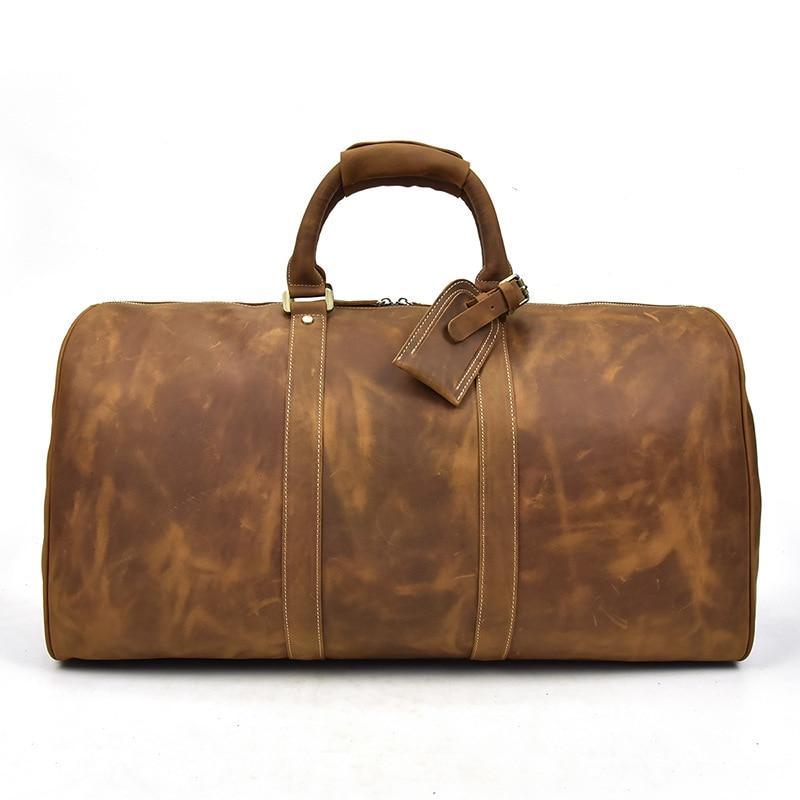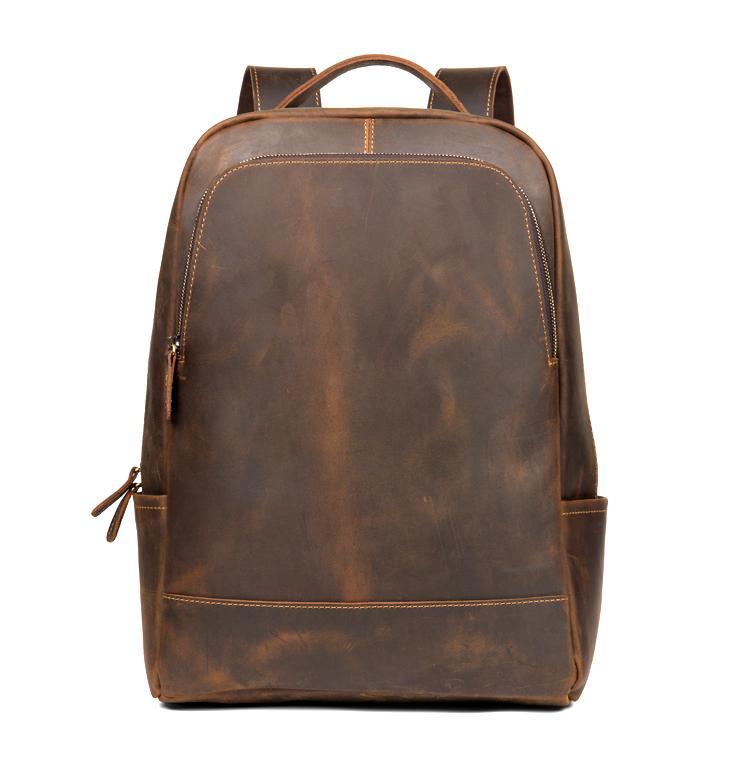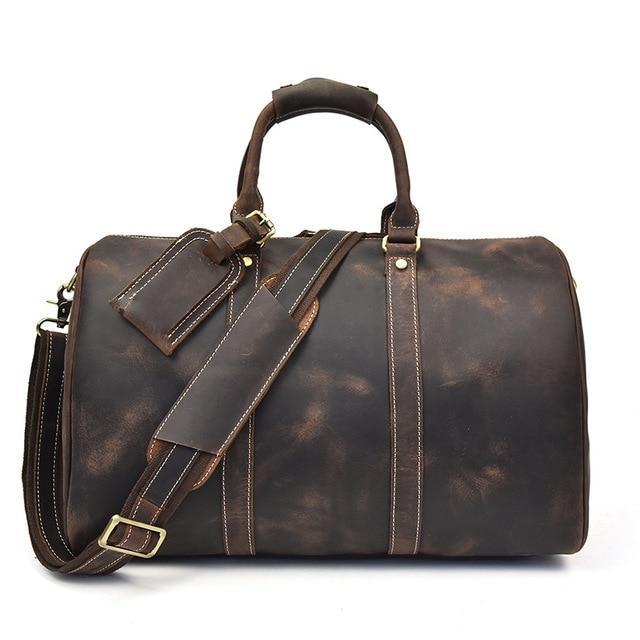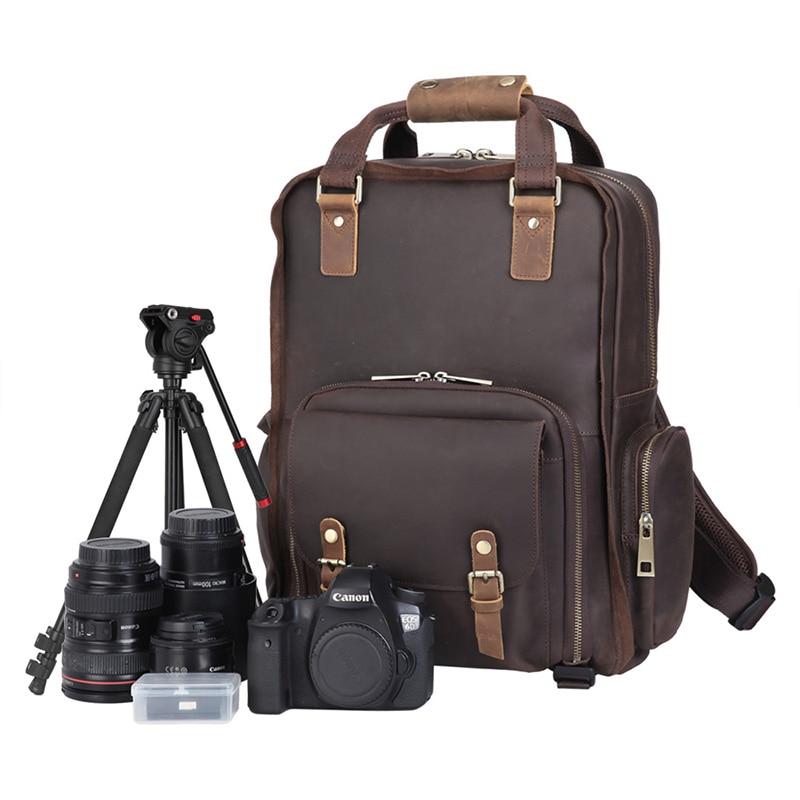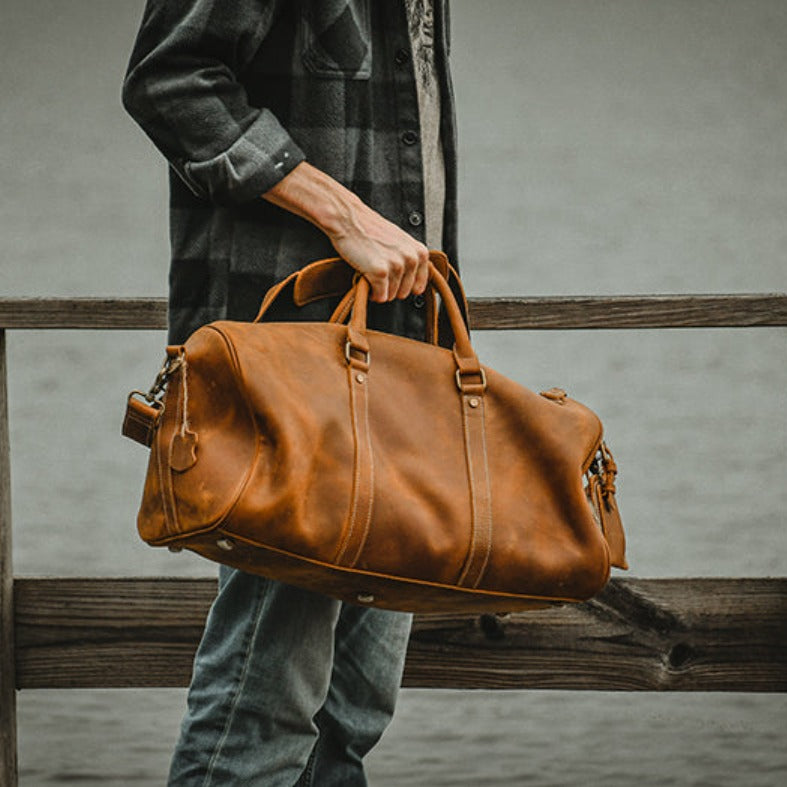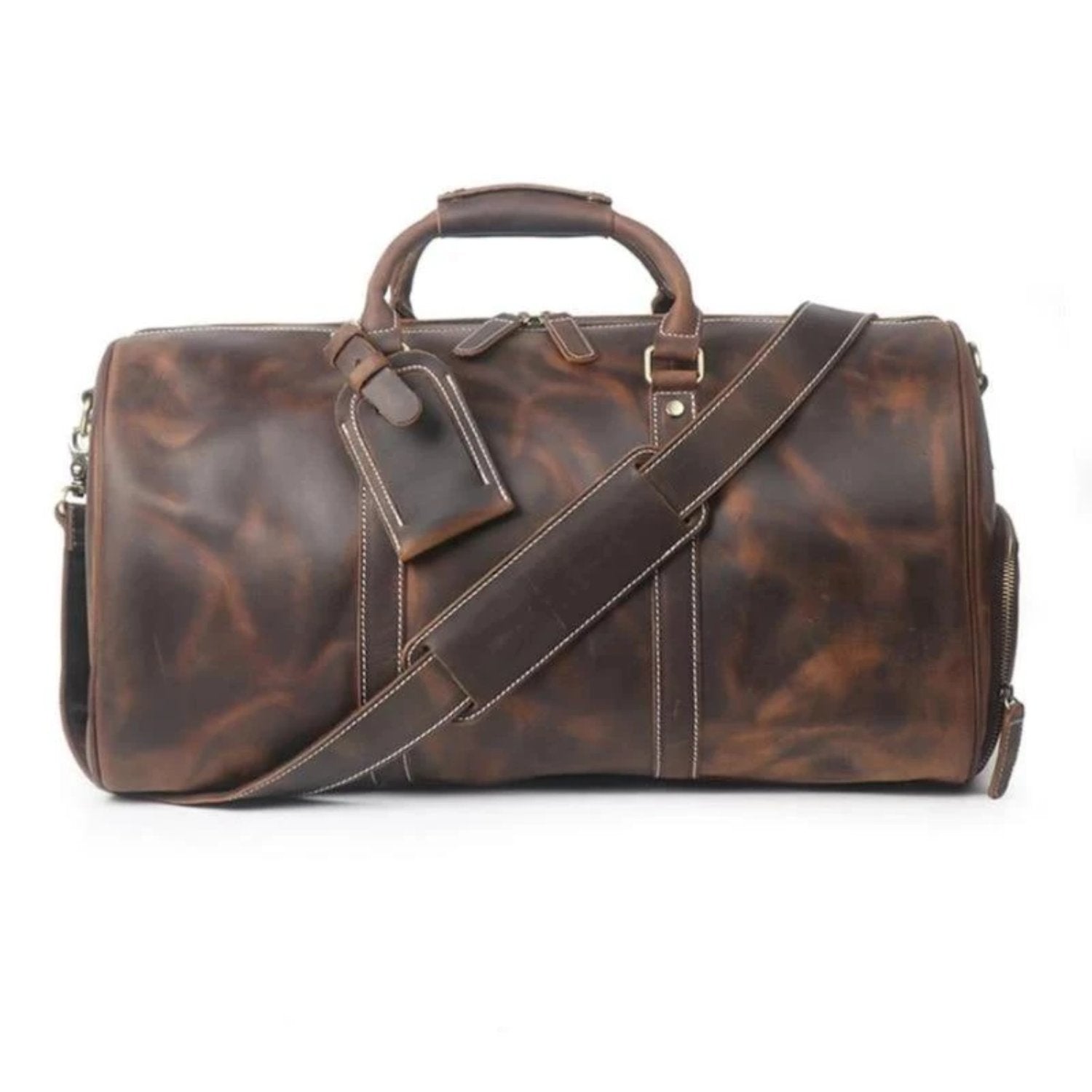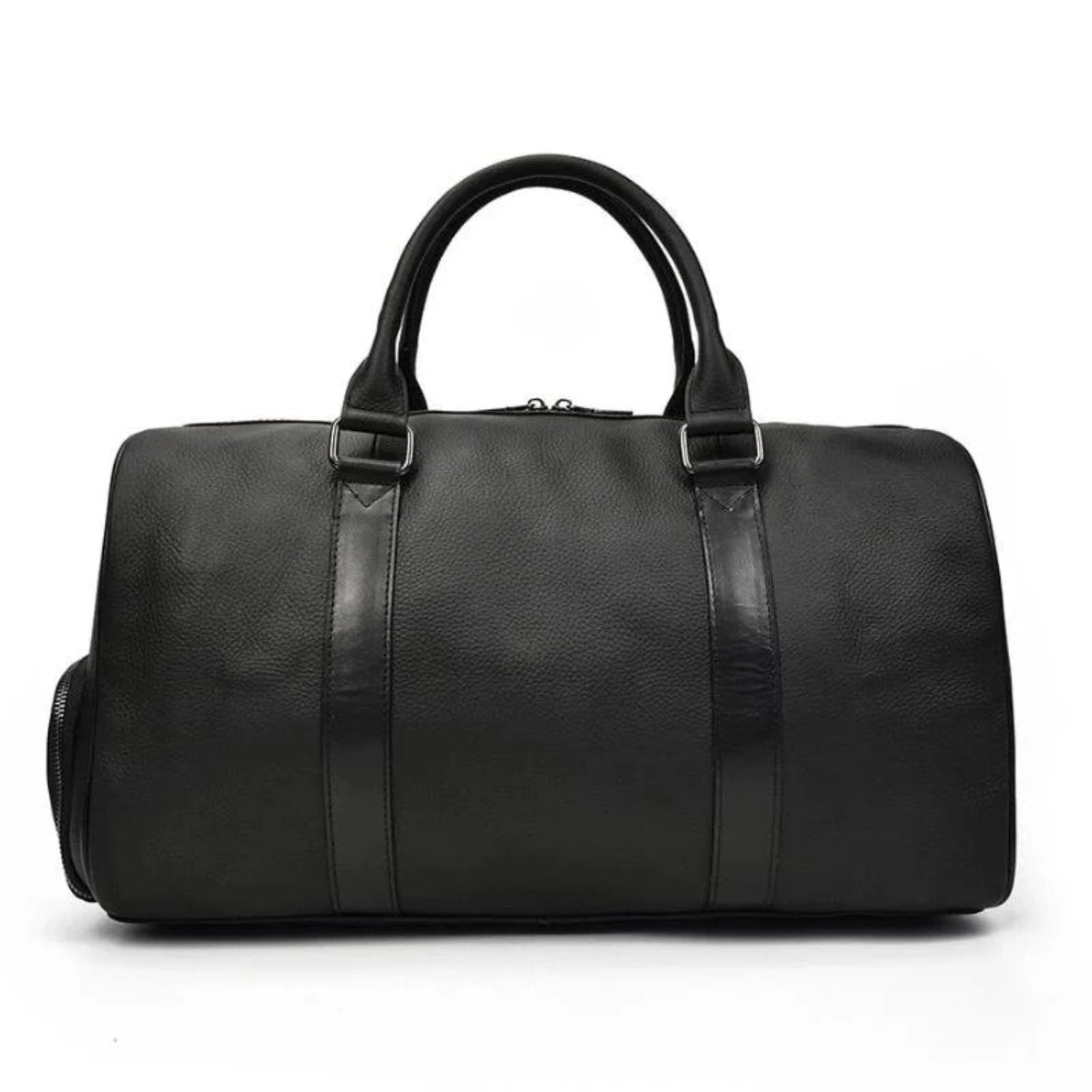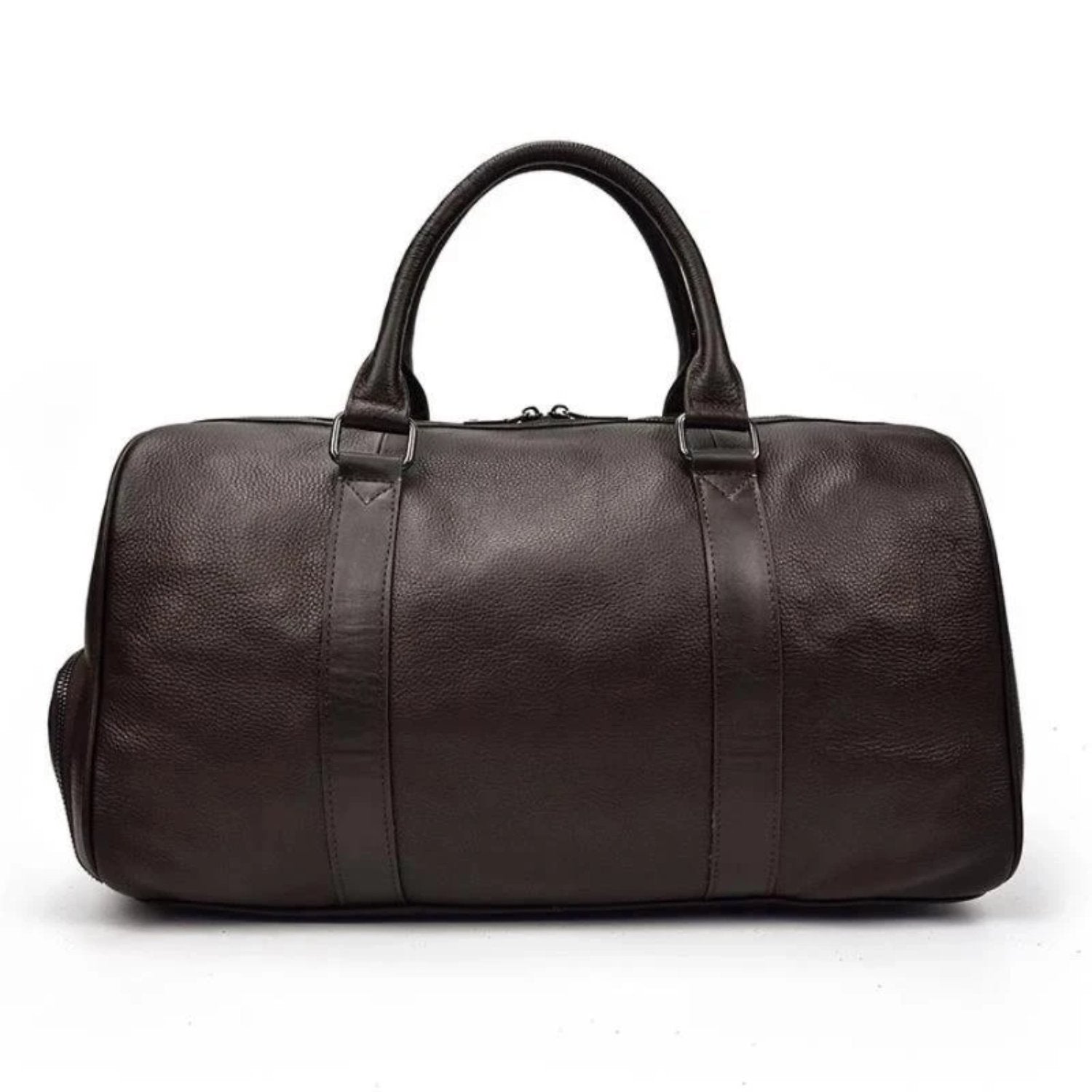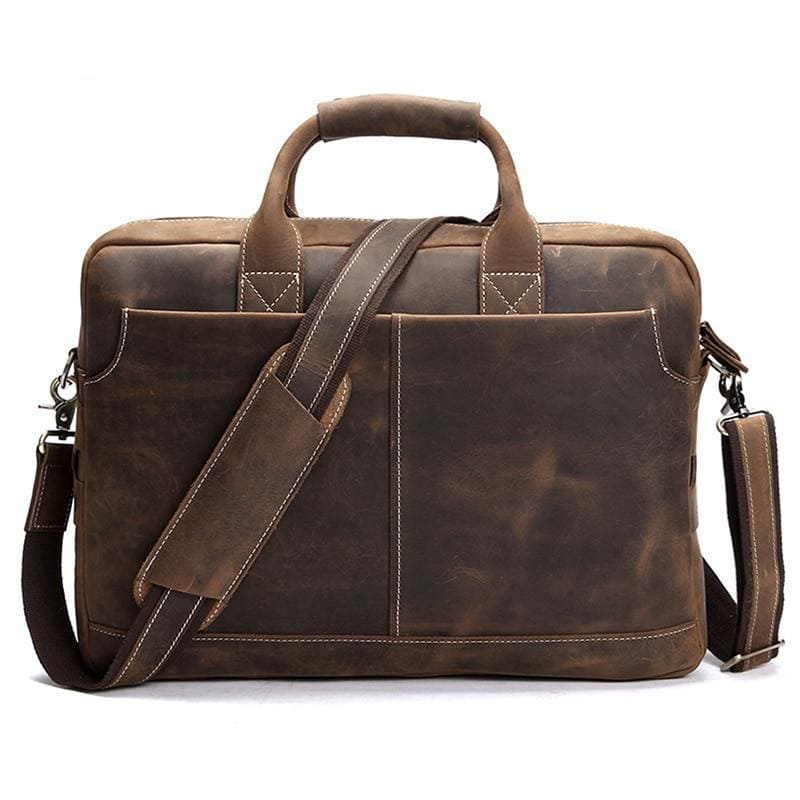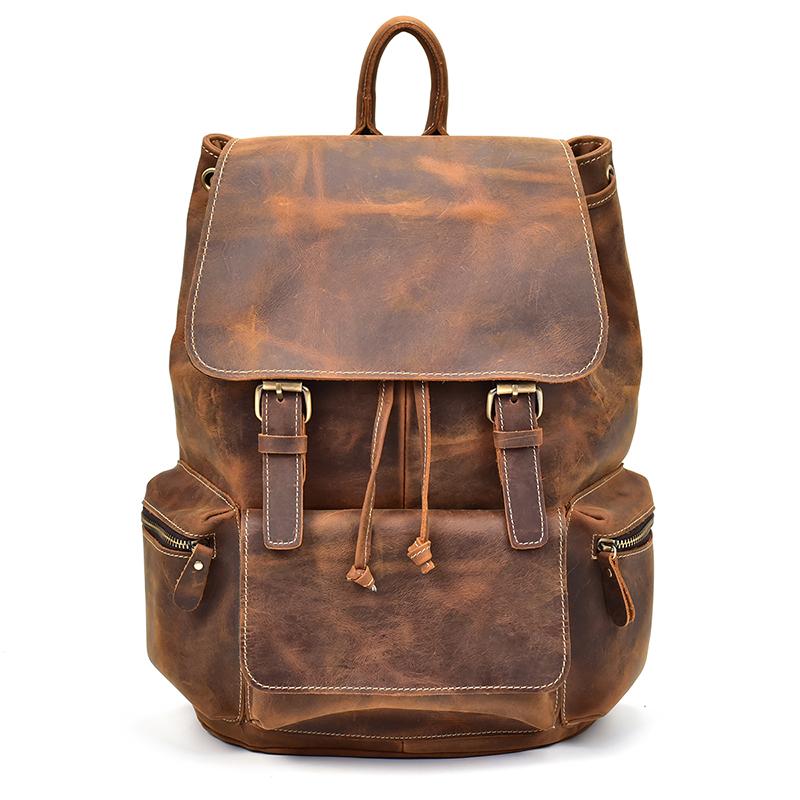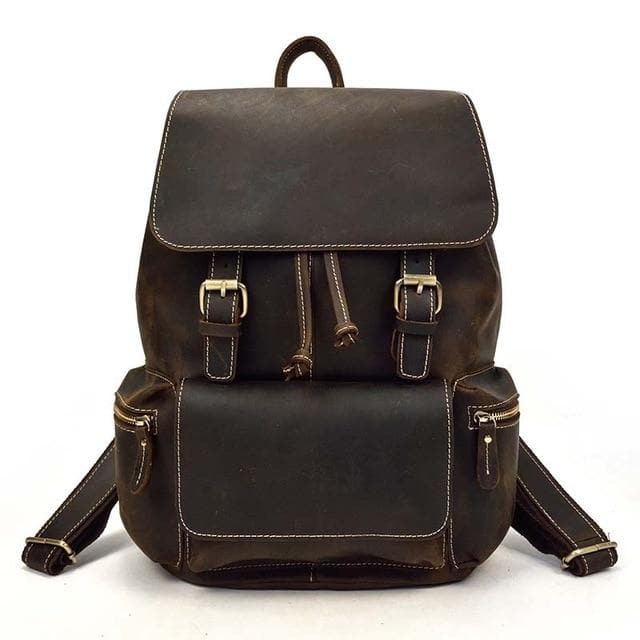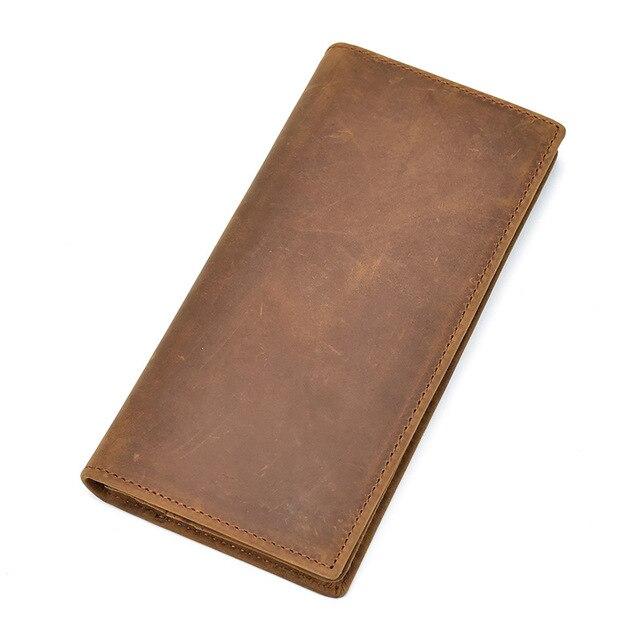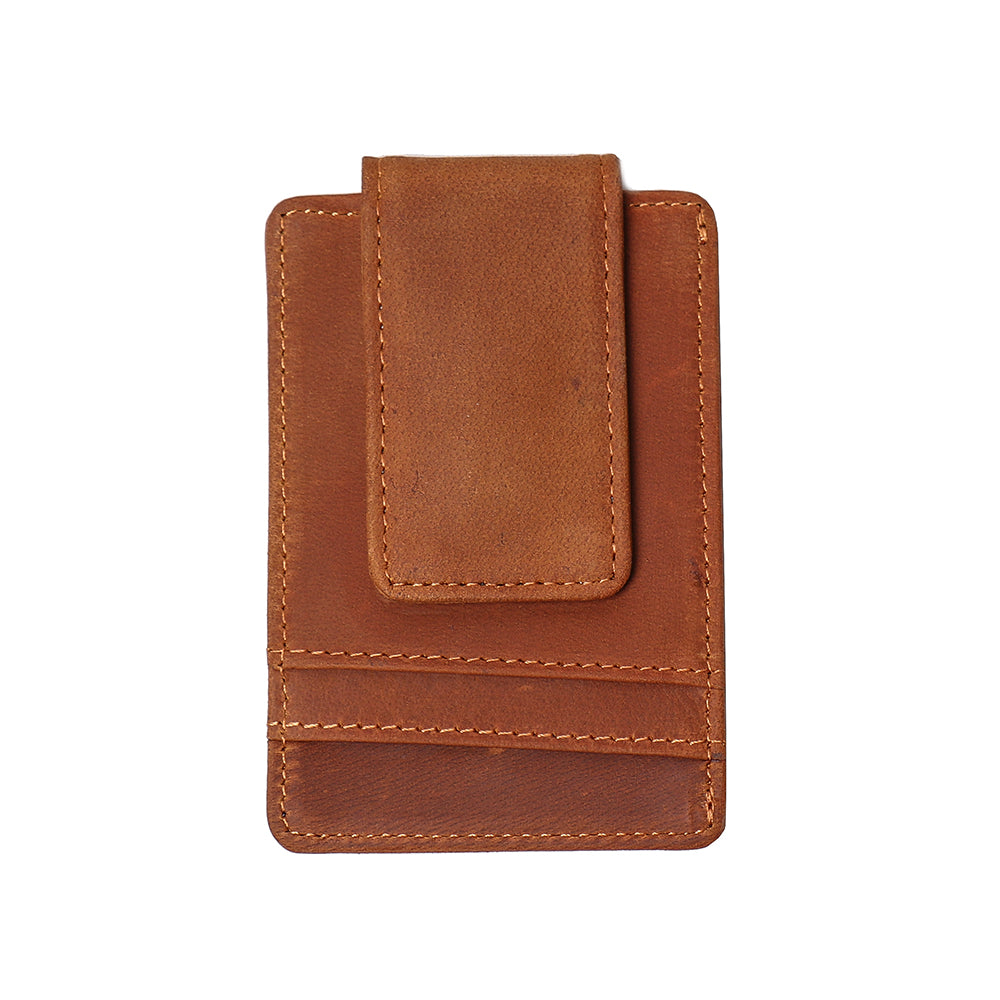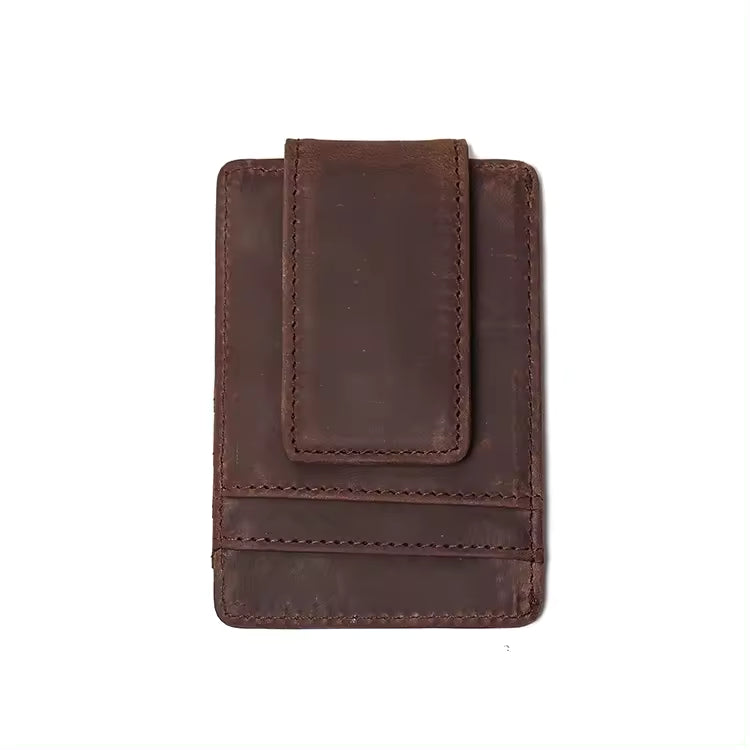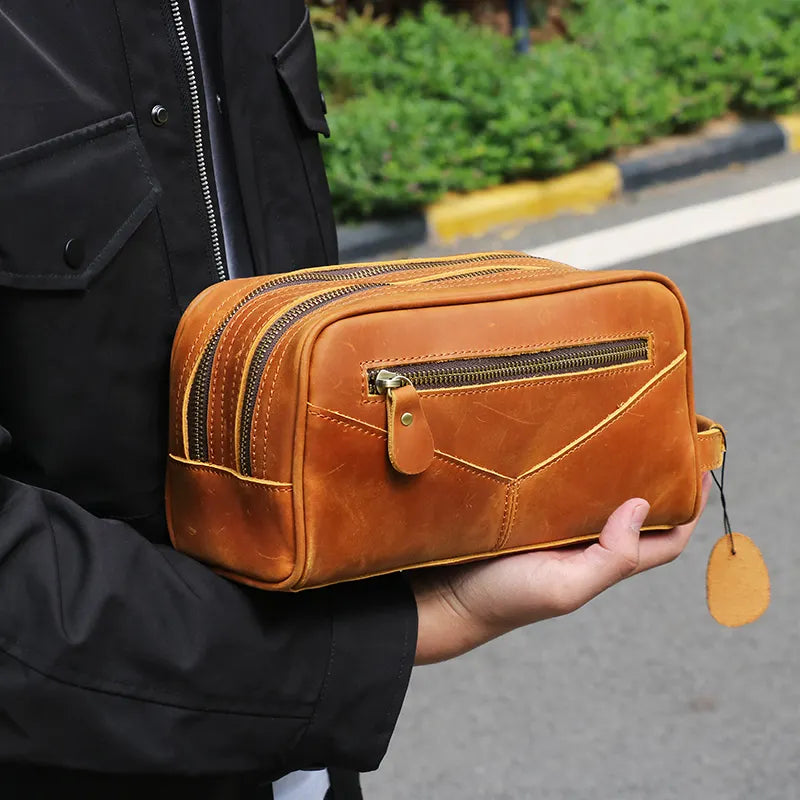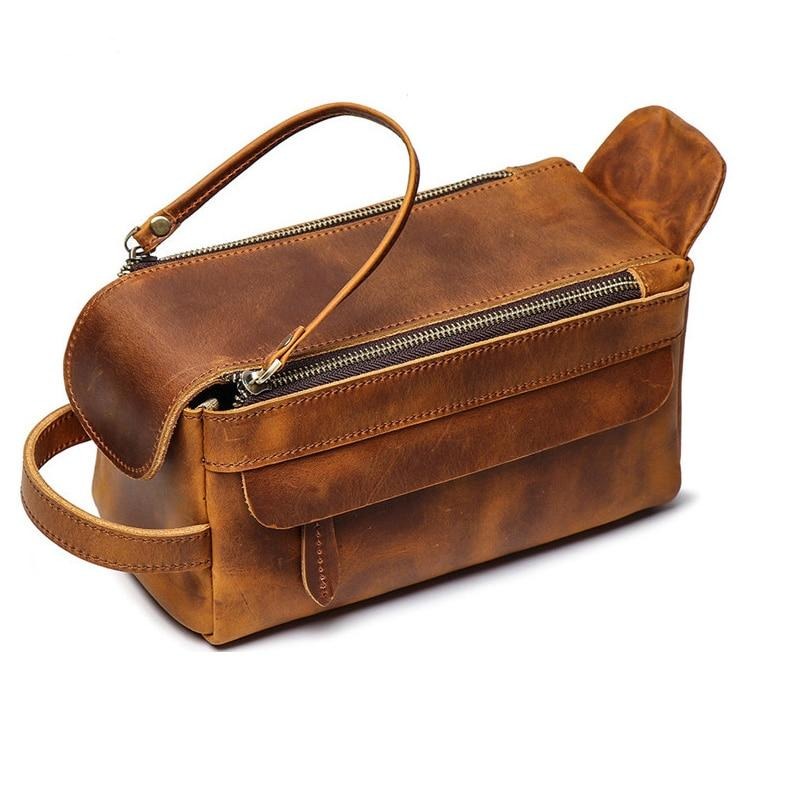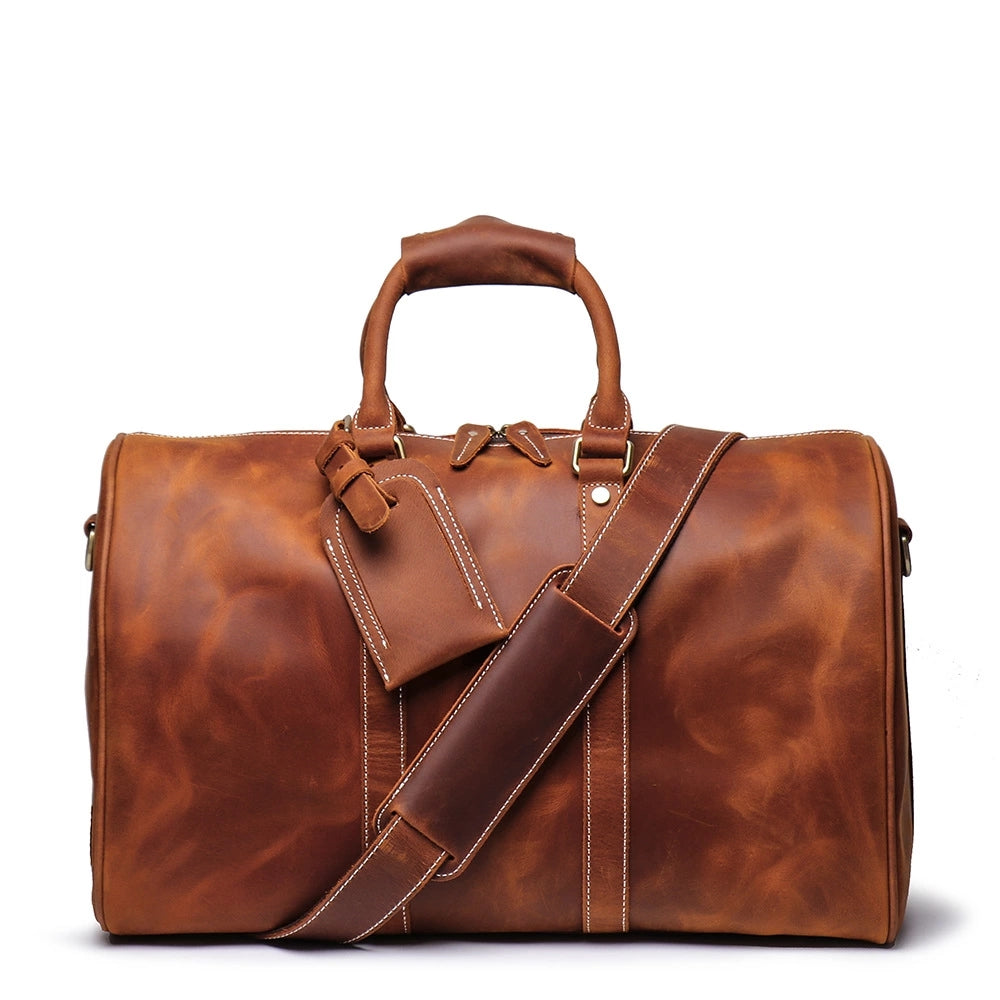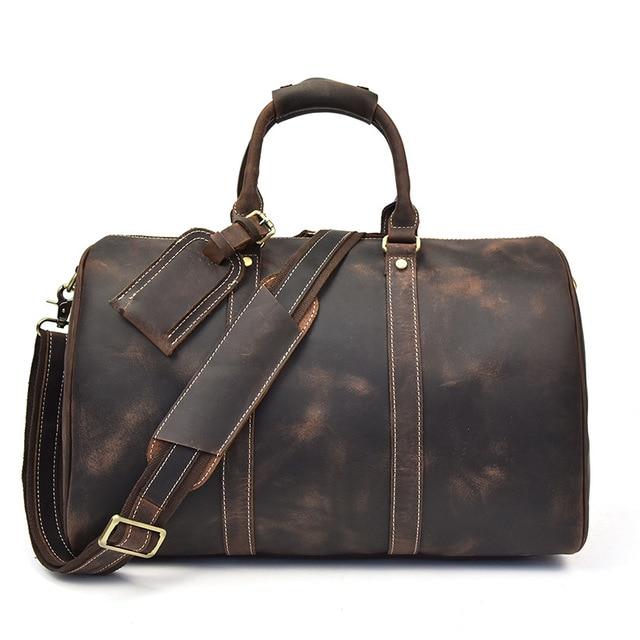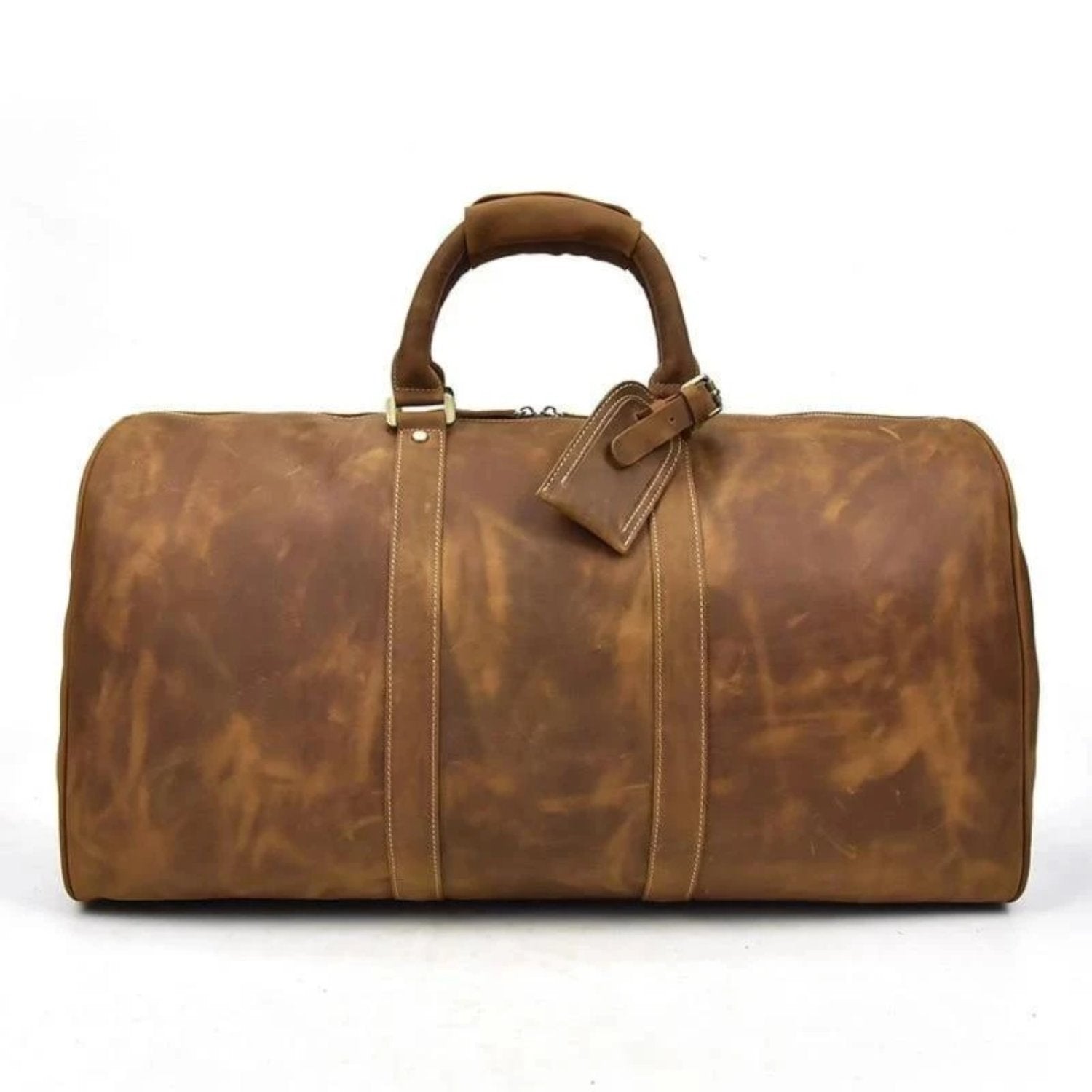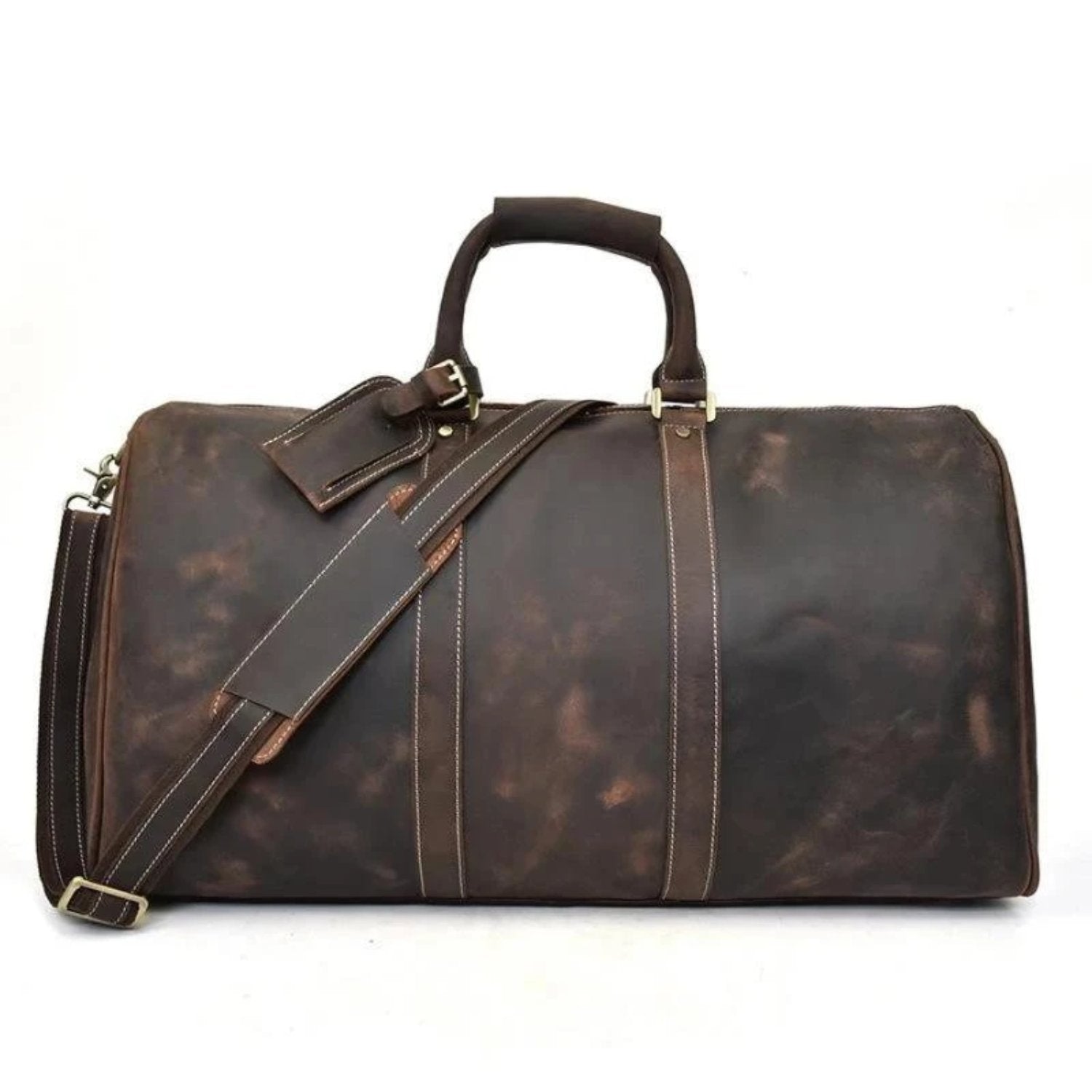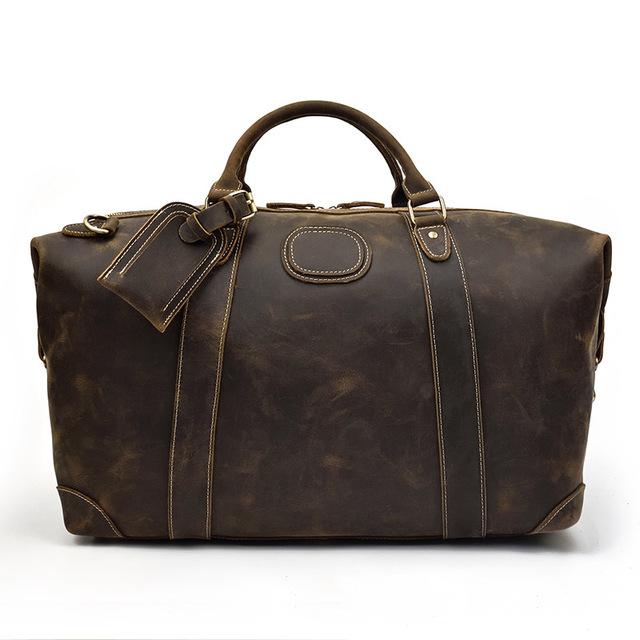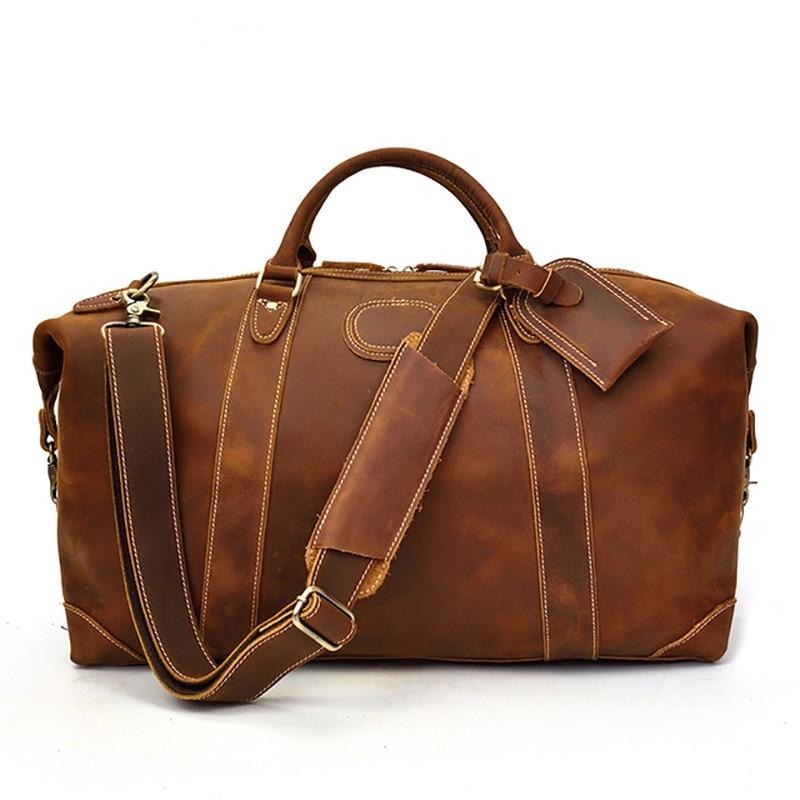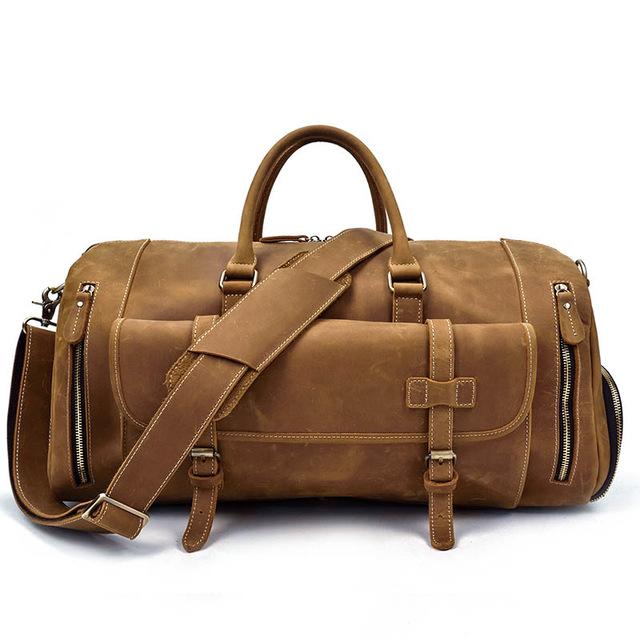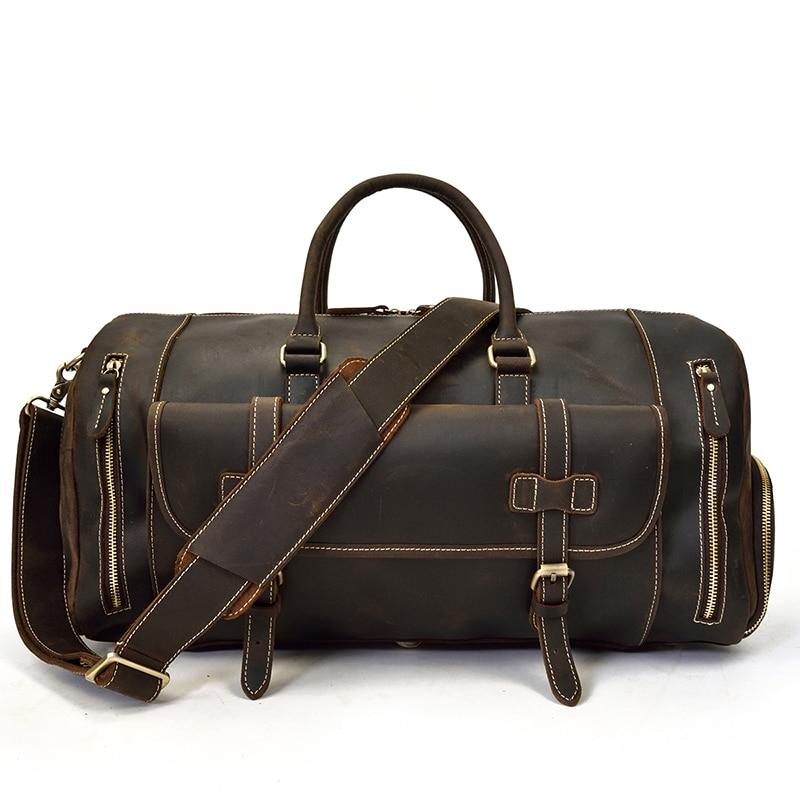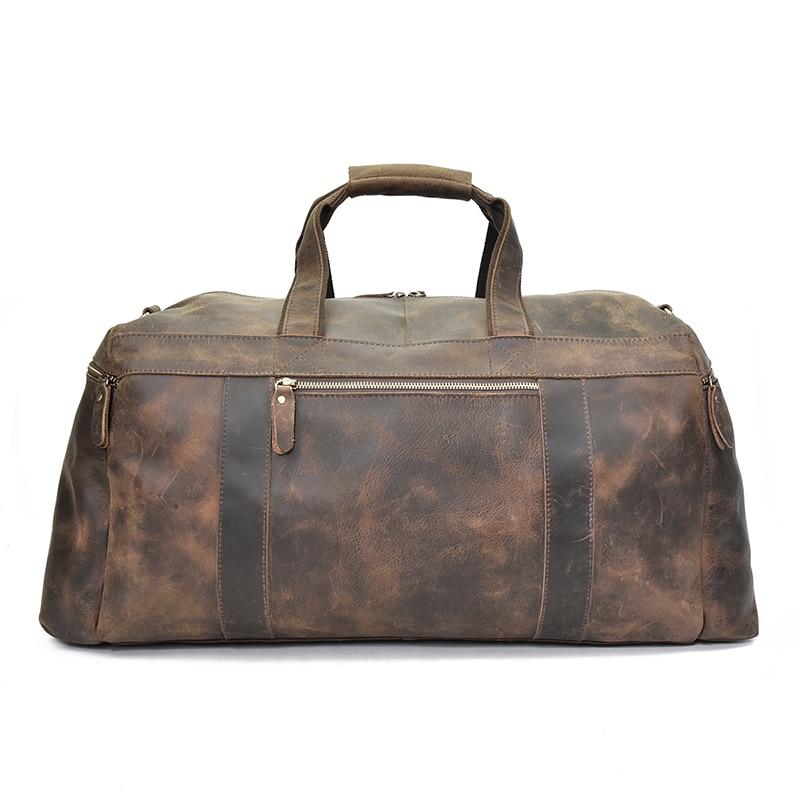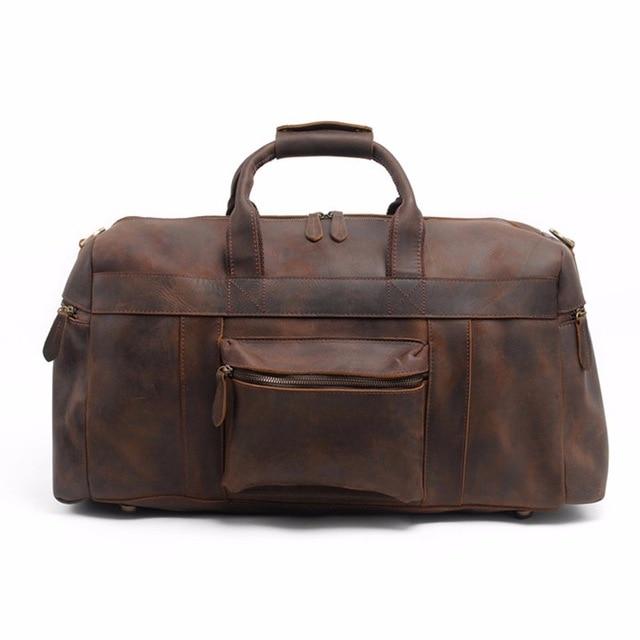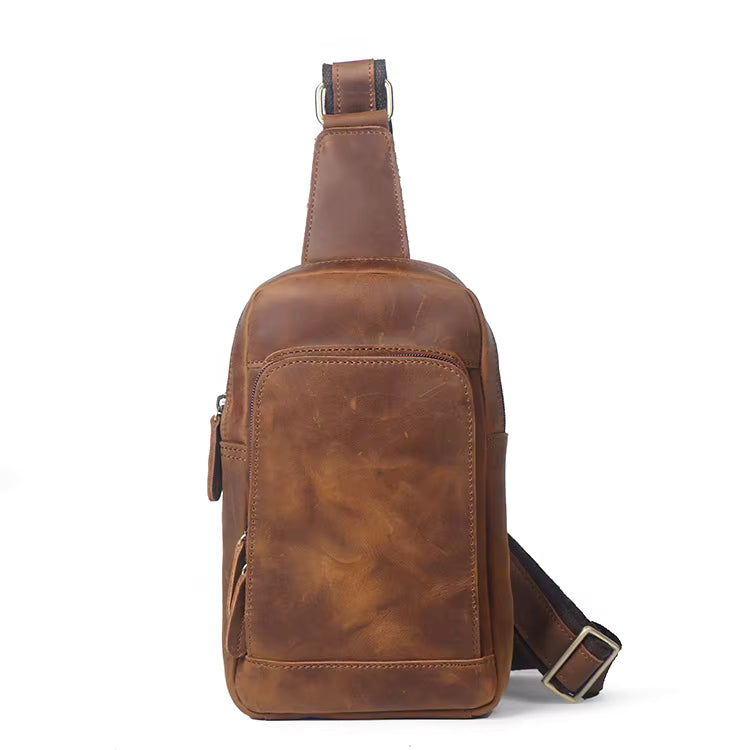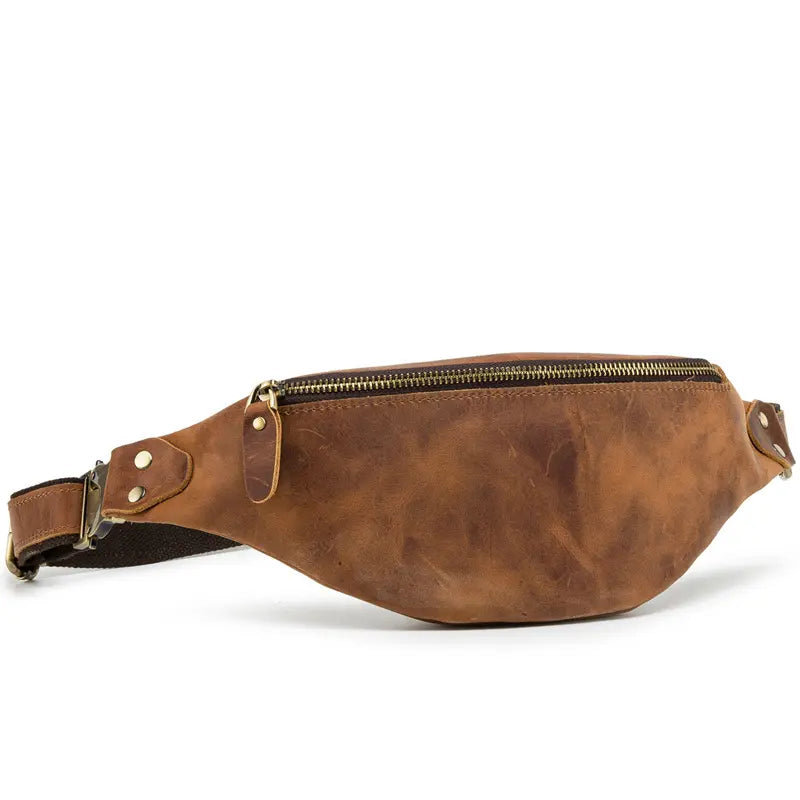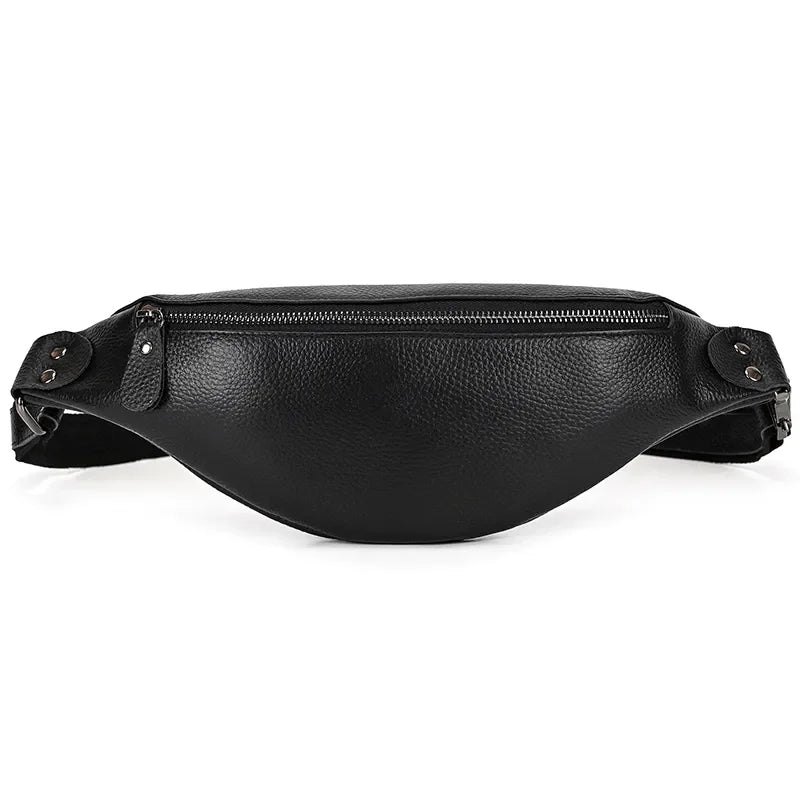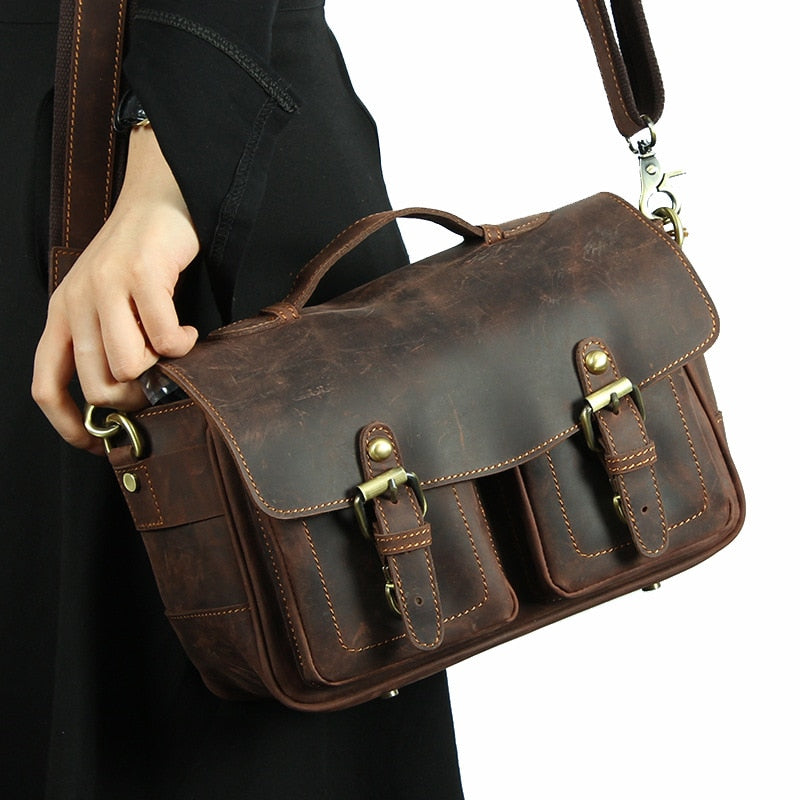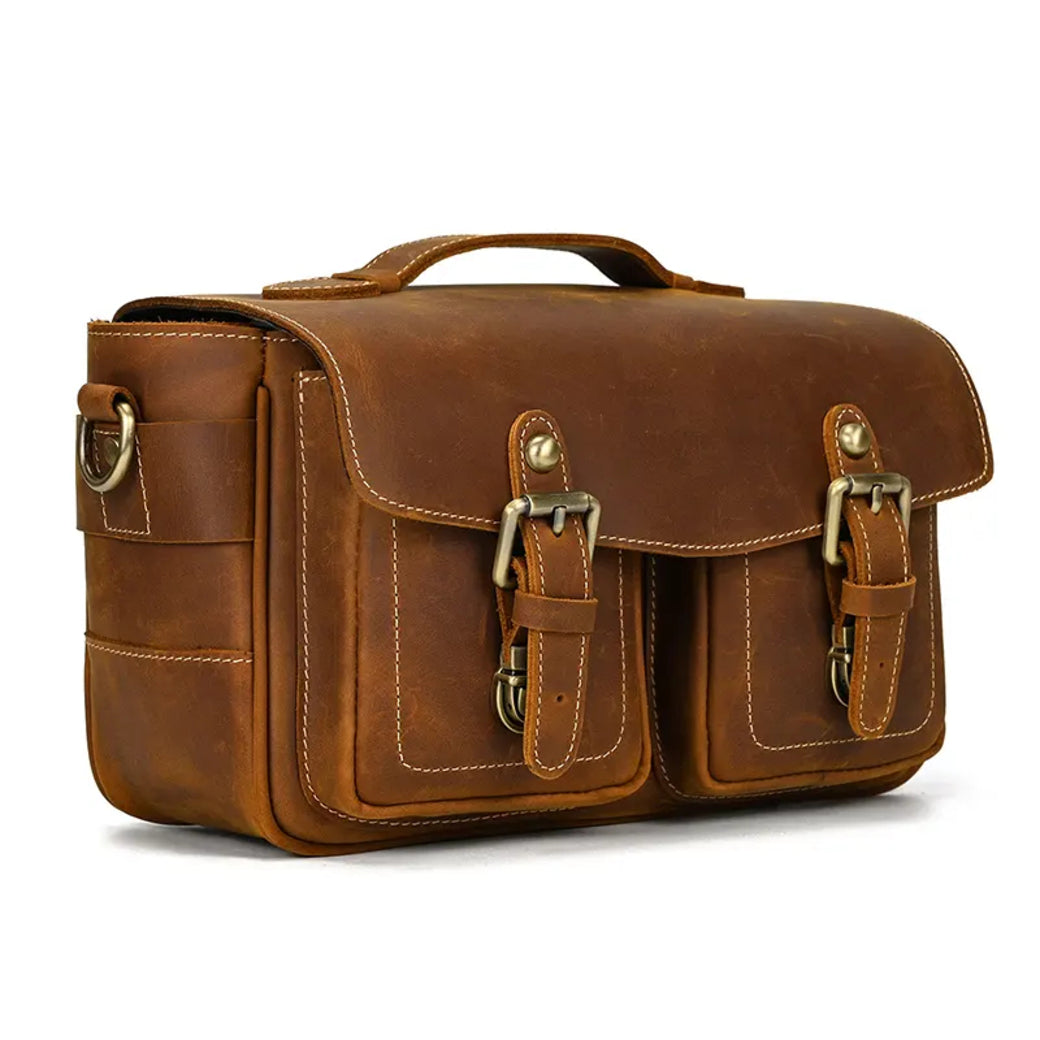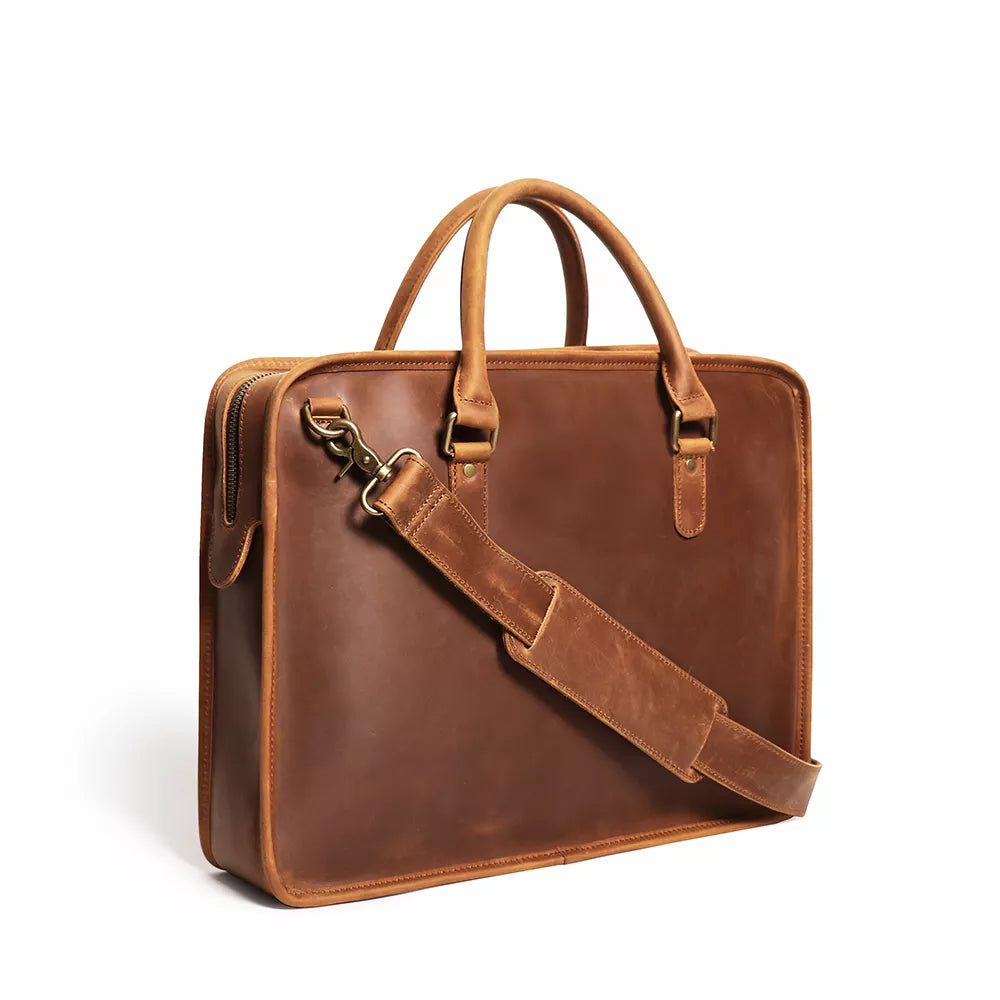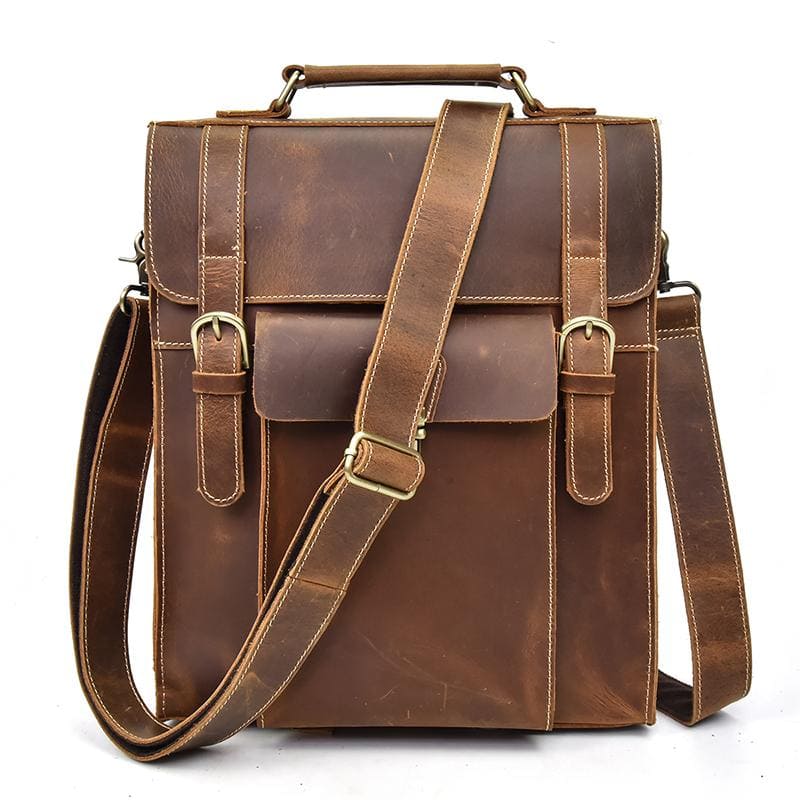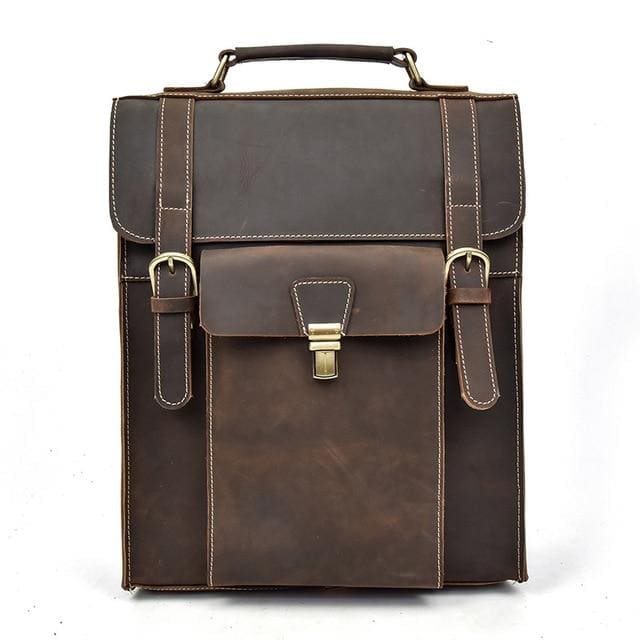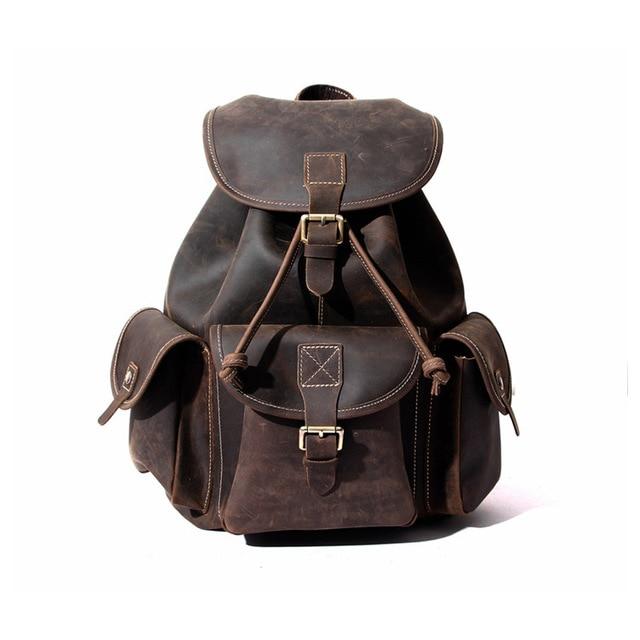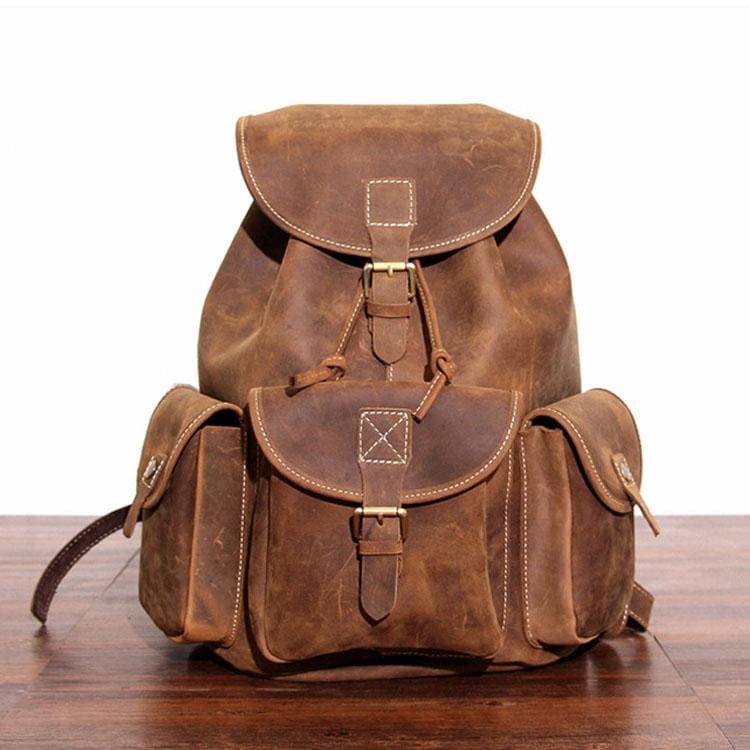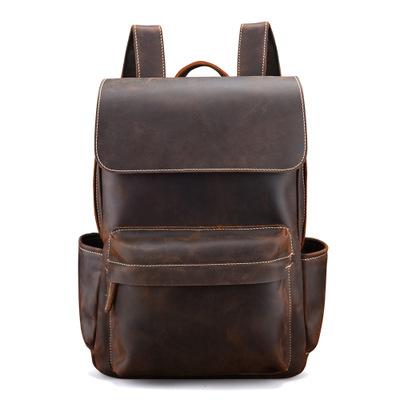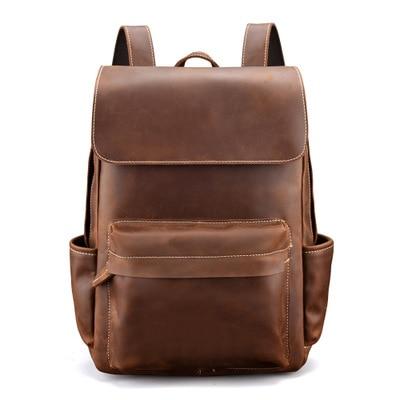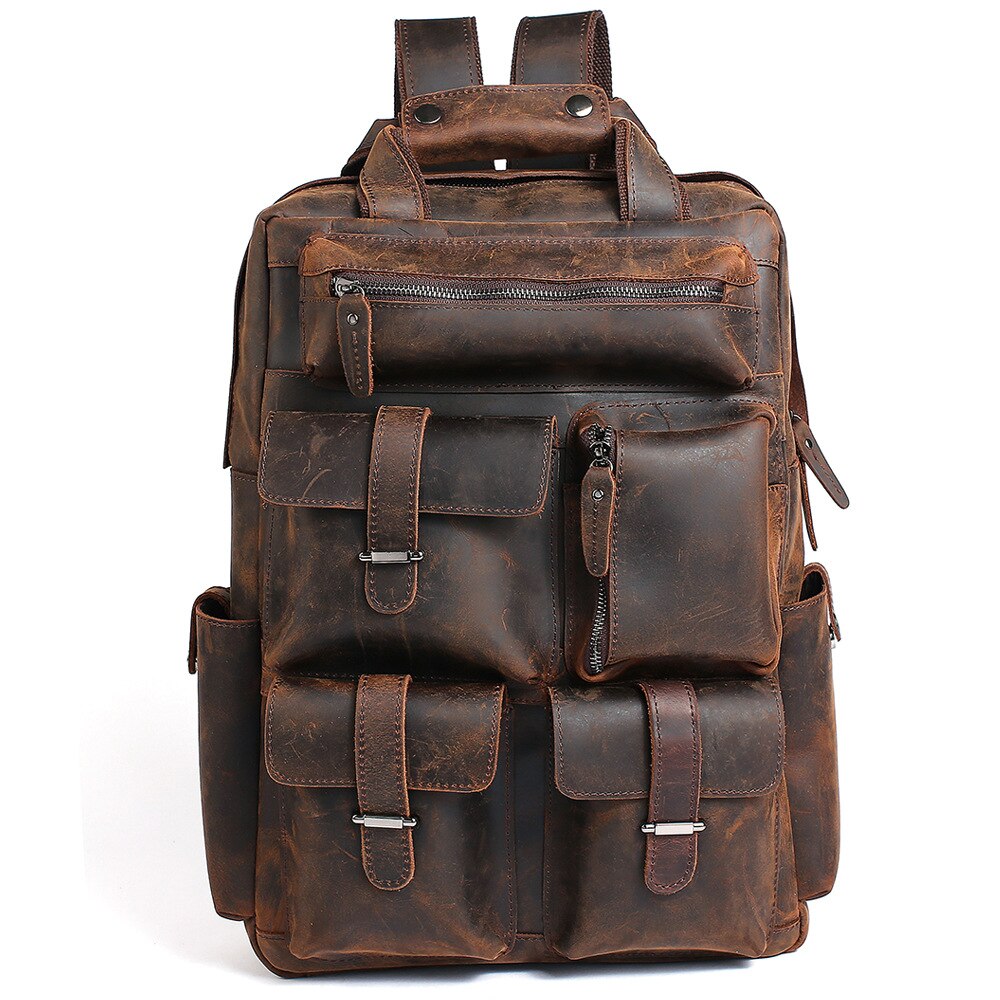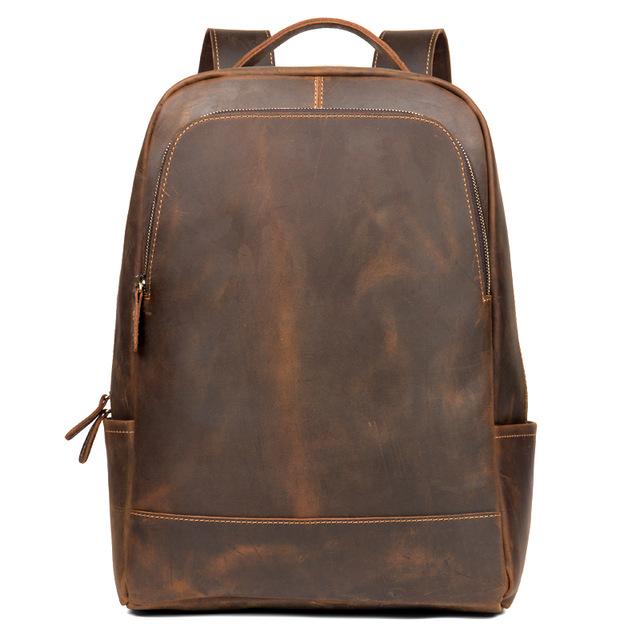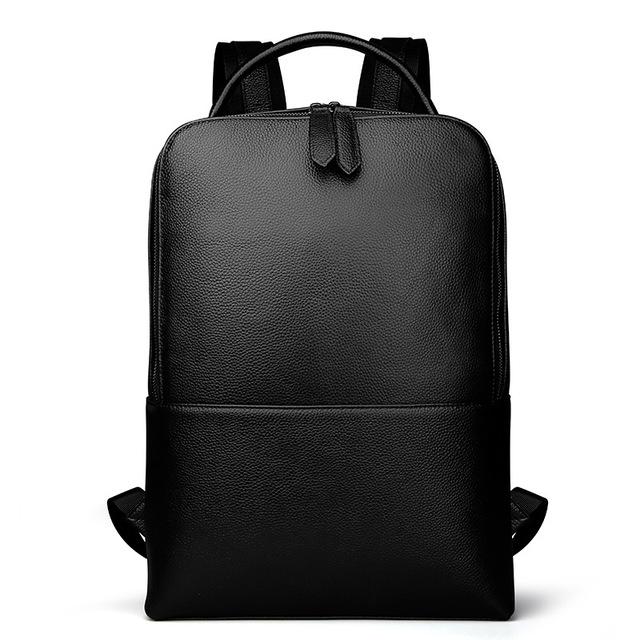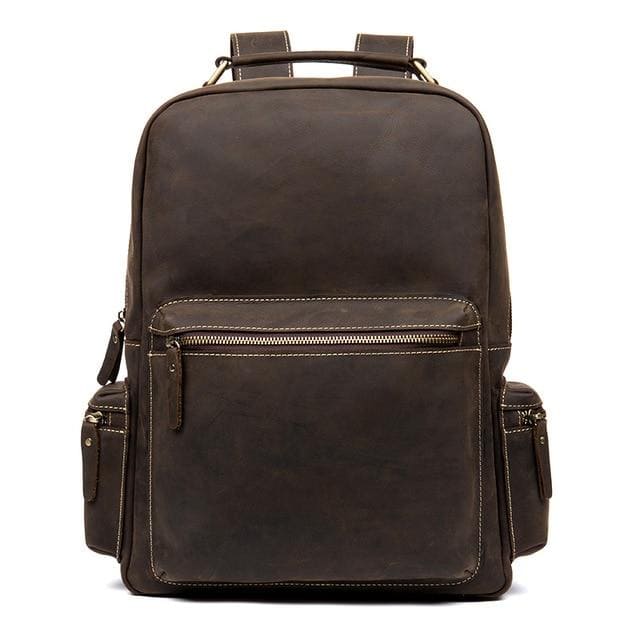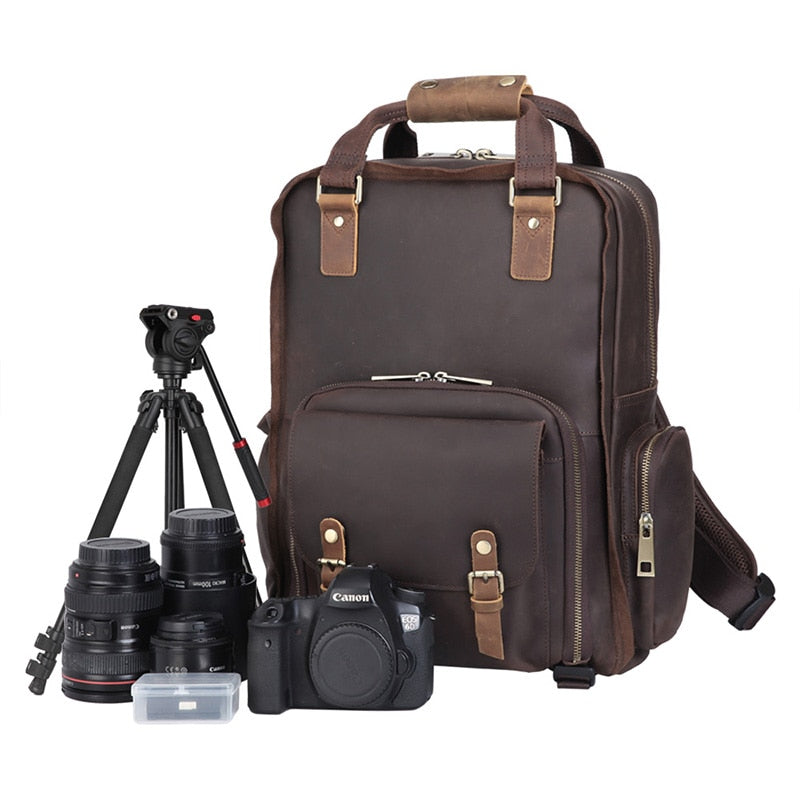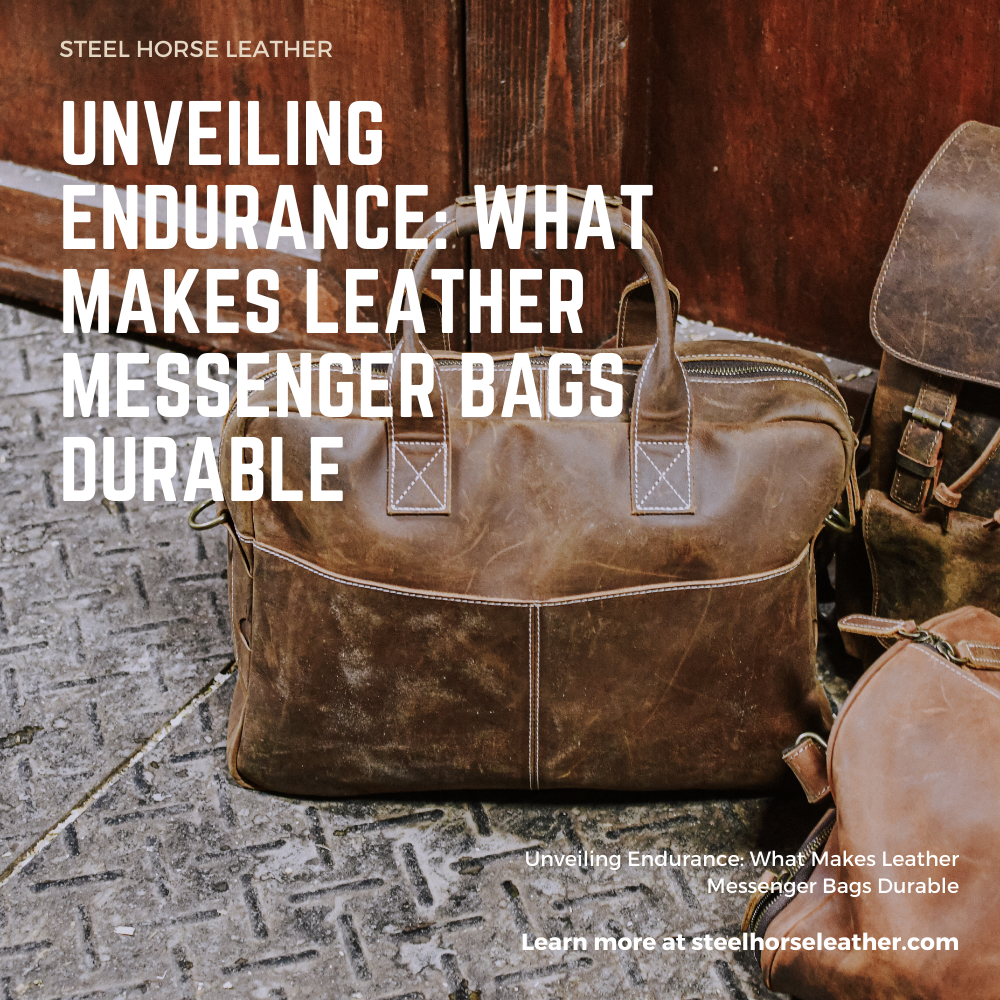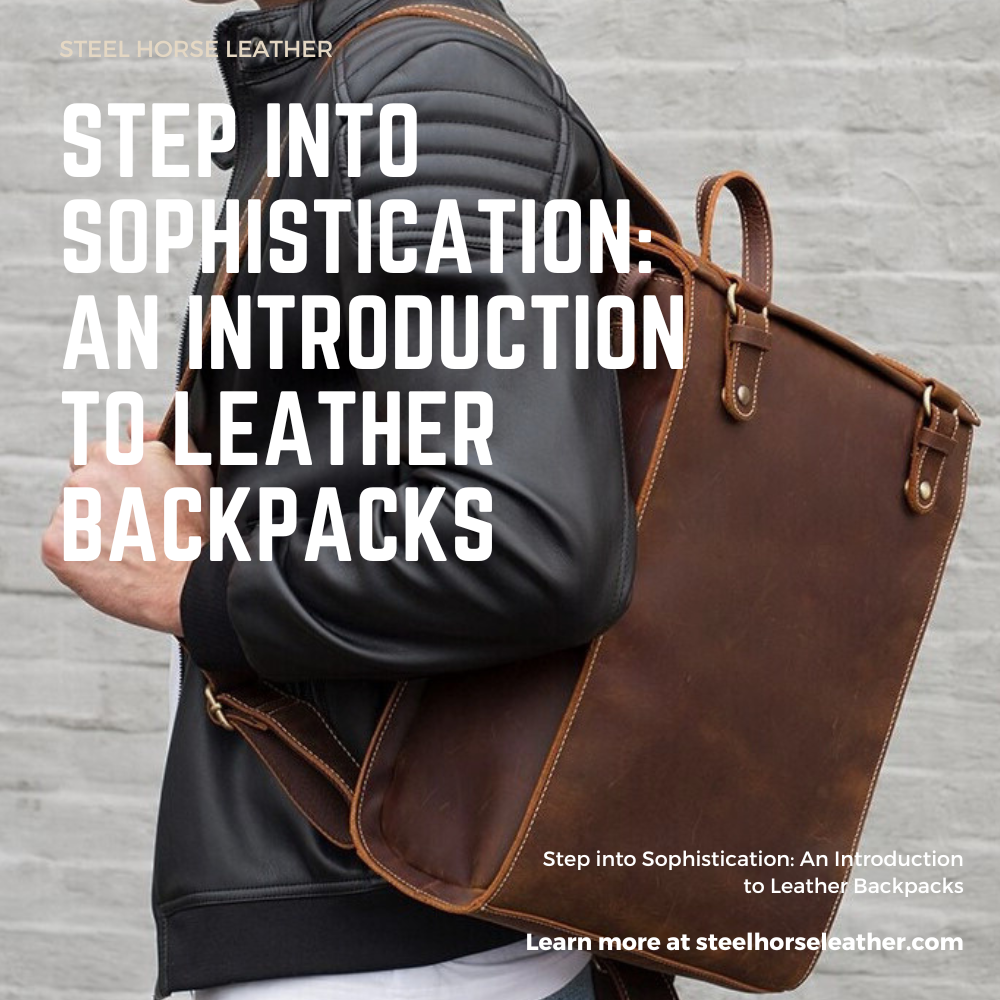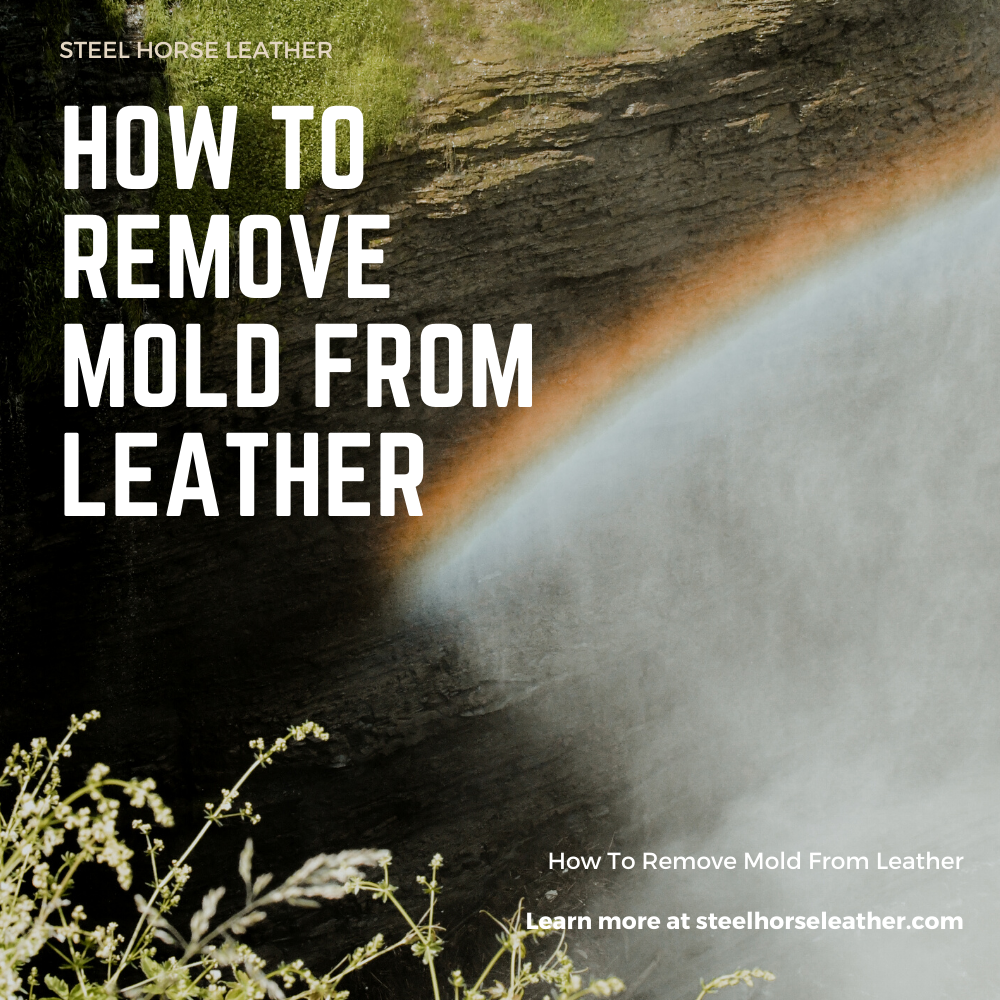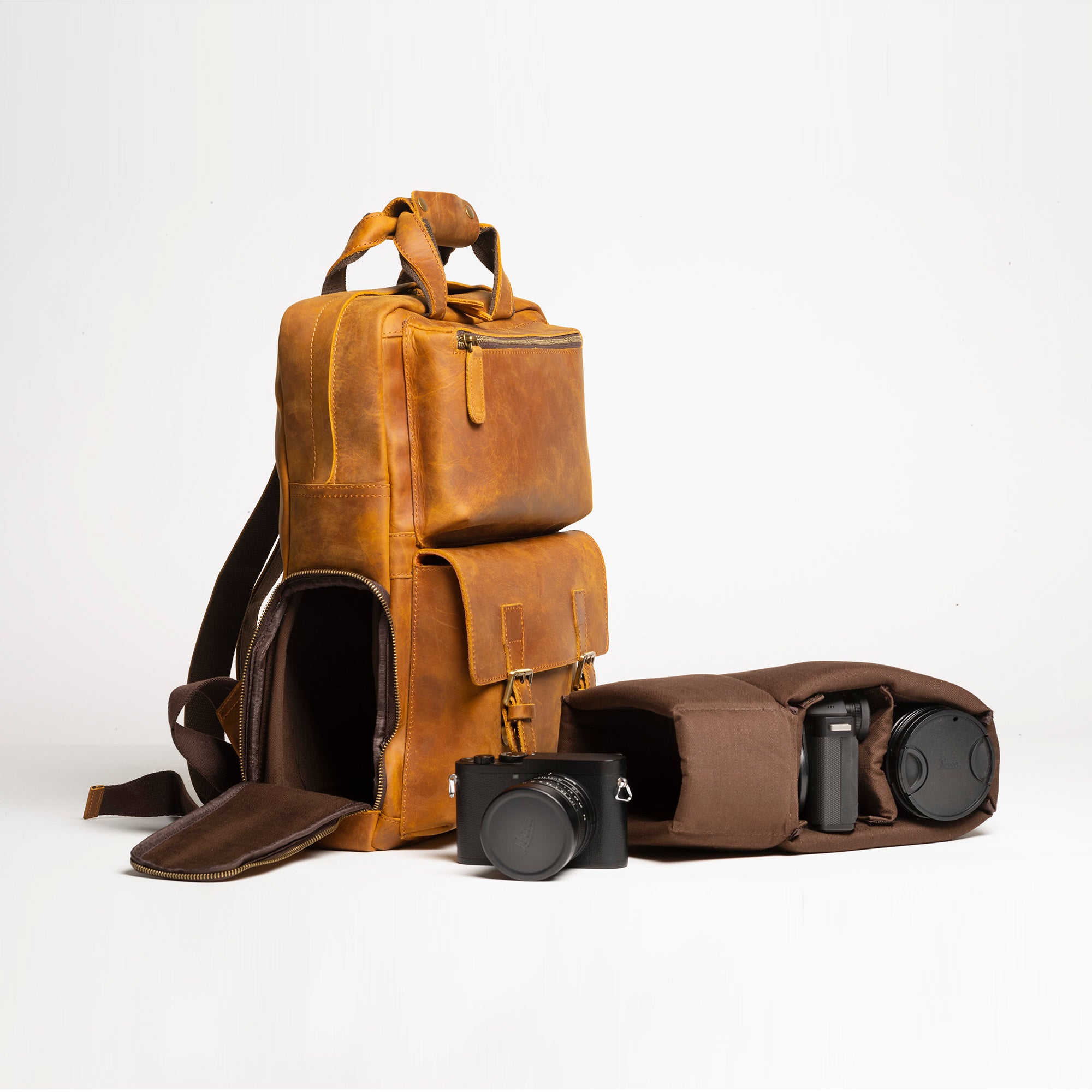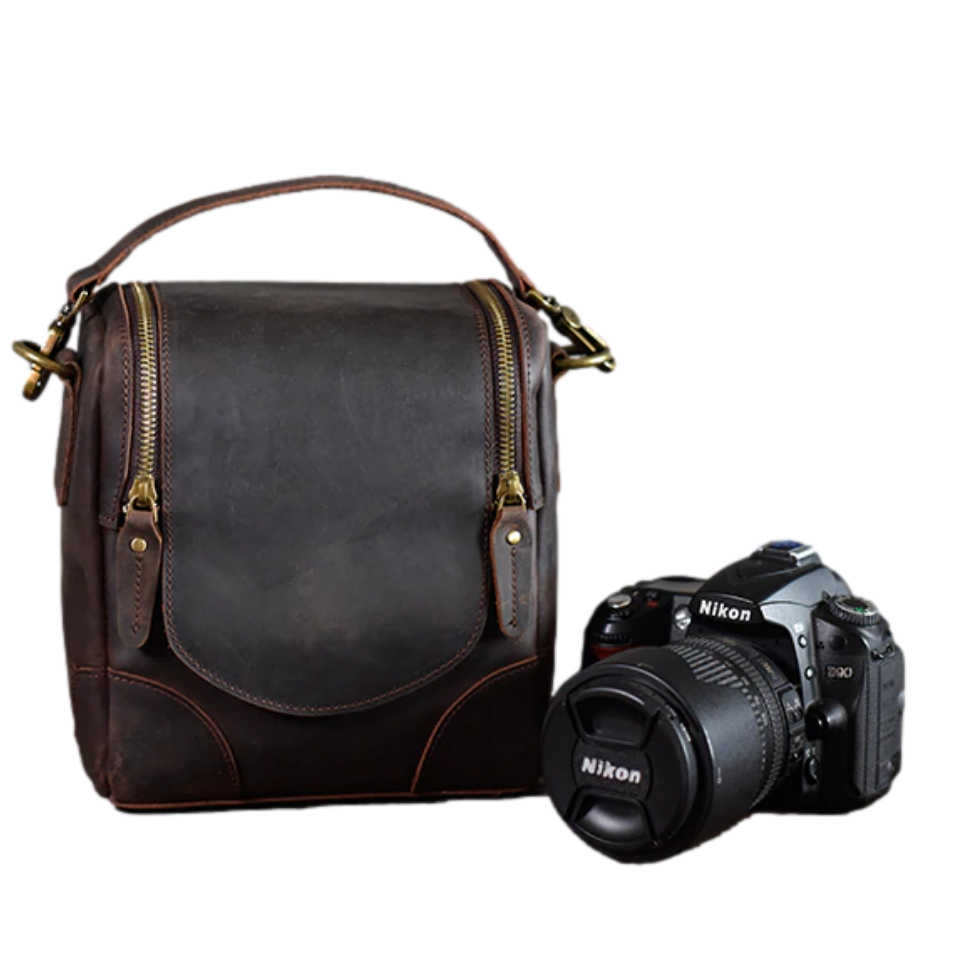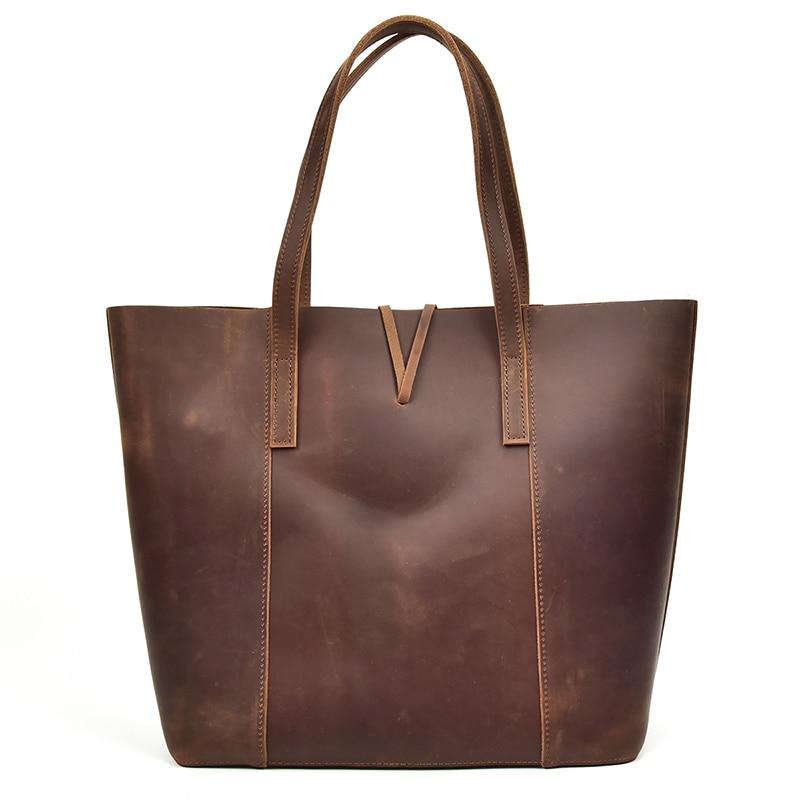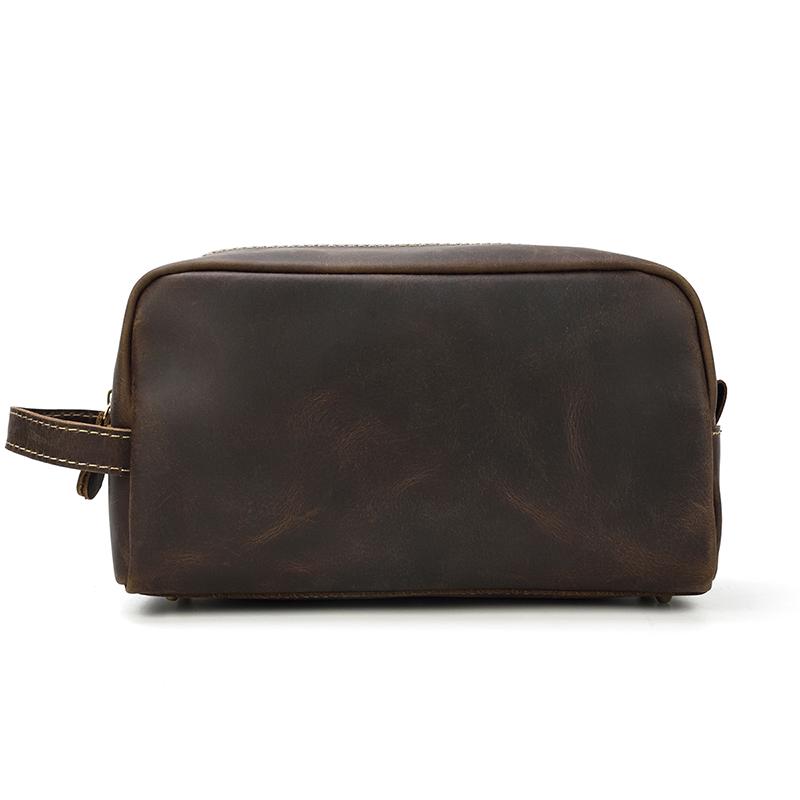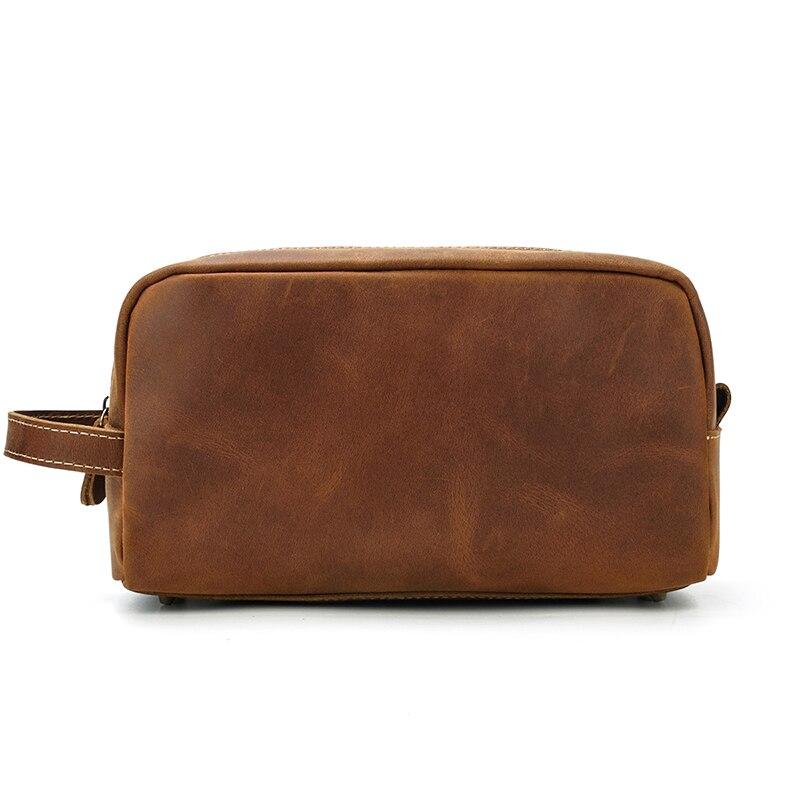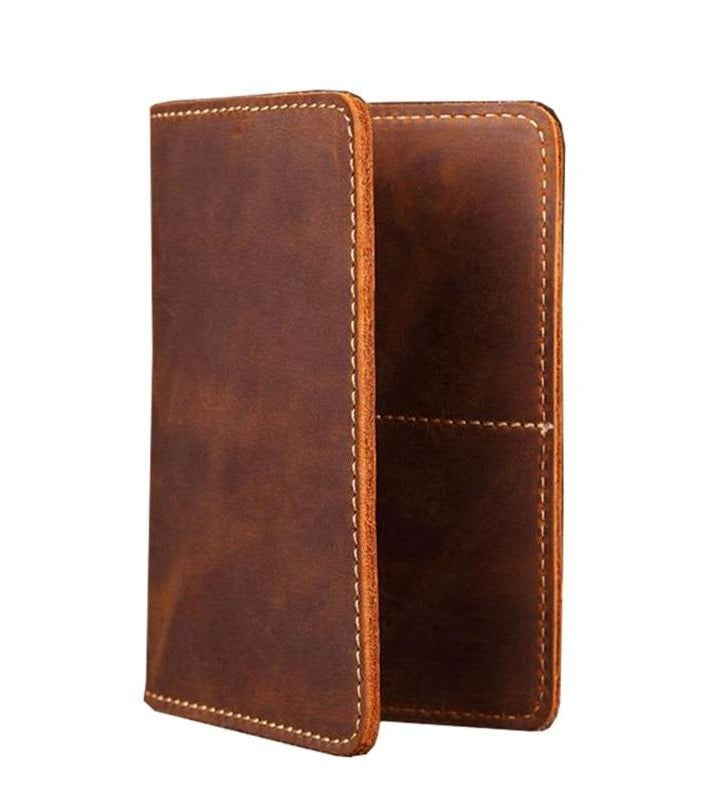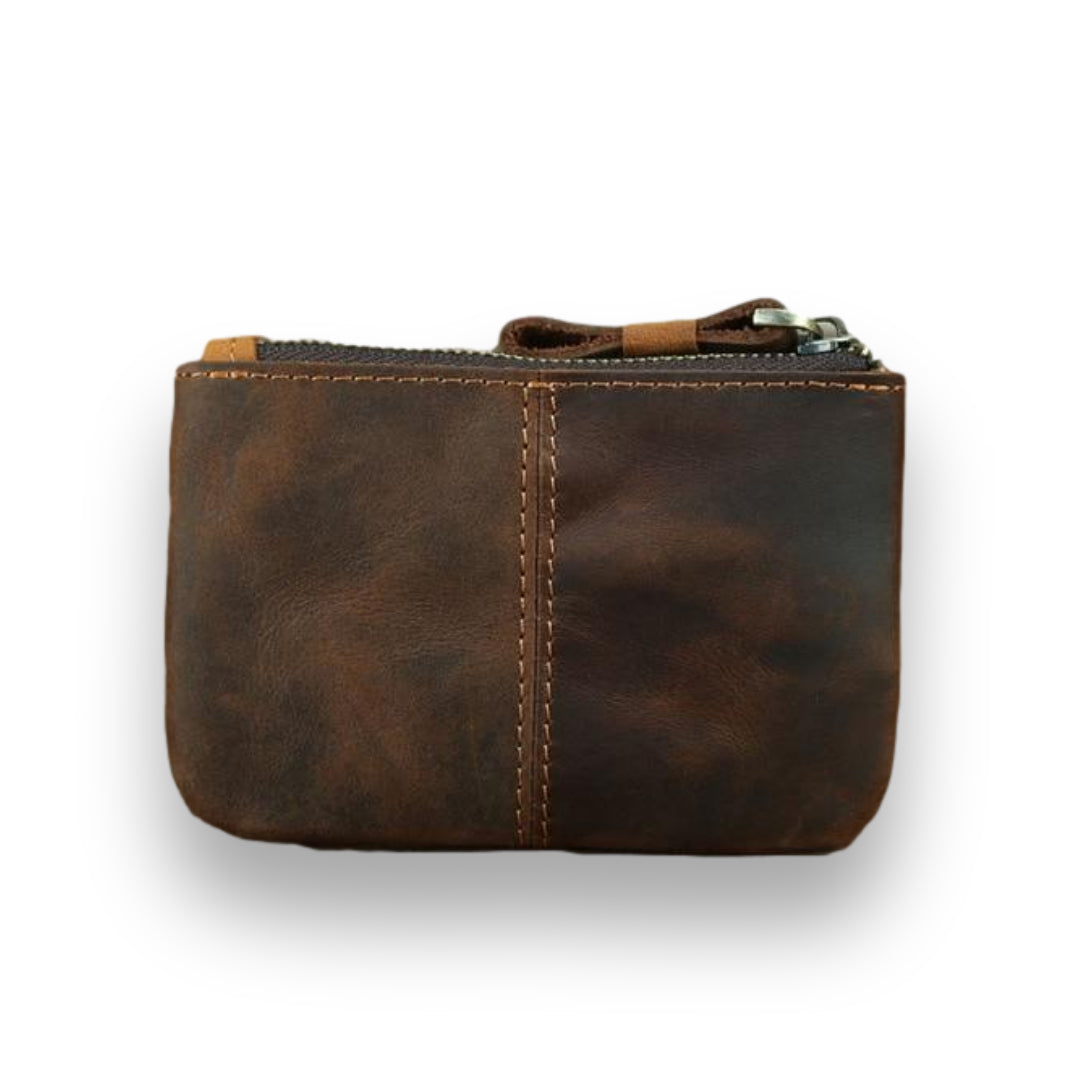Do you know that leather camera bags can actually contribute to sustainability? Yes, you heard it right! While you may not be aware of it, leather camera bags have the potential to nurture nature and support eco-friendly practices. In this article, we will delve into the ways in which leather camera bags can be an environmentally conscious choice for those who value freedom and want to make a positive impact on the planet. From choosing ethically sourced leather to opting for vegetable-tanned materials, we will explore how these bags can be a sustainable alternative without compromising on style or functionality. So, if you're passionate about protecting the environment and love capturing moments with your camera, keep reading to discover the hidden potential of leather camera bags.
Key Takeaways
-
Sustainable leather camera bags support eco-friendly practices through responsible sourcing, ethical farming, and regenerative agriculture methods that minimize environmental impact
-
Vegetable-tanned leather offers a more sustainable alternative by using natural dyeing processes, reducing harmful chemicals, and providing biodegradable end-of-life disposal
-
Upcycling and recycled leather materials help reduce waste, extend product lifecycles, and support circular economy principles in the fashion industry
-
Durable leather camera bags built with quality craftsmanship reduce consumer waste by minimizing the need for frequent replacements and encouraging repair over disposal
-
Carbon footprint considerations such as localized production, eco-friendly tanning processes, and sustainable packaging can significantly reduce the environmental impact of leather camera bags
Our Expertise in Sustainable Leather Craftsmanship

At Steel Horse Leather, we bring decades of specialized knowledge in ethical leather sourcing and sustainable craftsmanship to every discussion about environmentally conscious leather goods. Our master artisans have dedicated their lives to perfecting traditional leather-working techniques, combining time-honored methods with modern sustainability practices. This deep expertise allows us to provide authoritative insights into the complex world of sustainable leather production, from understanding the nuances of vegetable-tanning processes to evaluating the true environmental impact of different leather sourcing methods.
We've invested considerable time and resources in thoroughly vetting leather providers across the globe, examining their background, work philosophy, sourcing practices, and ethical standards. This comprehensive approach has given us unique insights into the leather supply chain that most consumers never see. Our holistic mapping of leather origins and processing methods means we understand firsthand which practices truly support sustainability and which are merely marketing claims. When we discuss topics like regenerative agriculture, ethical farming practices, and carbon footprint considerations in leather production, we're drawing from real-world experience and direct relationships with suppliers who share our commitment to environmental responsibility.
Eco-Conscious Choices: Unveiling the Environmental Impact of Leather Camera Bags
When considering eco-conscious choices for your camera bag, it is important to uncover the true environmental impact of leather camera bags. While leather has long been associated with luxury and durability, the leather industry has significant environmental drawbacks that are often overlooked. Leather production involves the use of harmful chemicals, such as chromium salts, which contribute to water pollution and soil contamination. Additionally, the rearing and slaughtering of animals for leather production contribute to greenhouse gas emissions and deforestation.
To make more sustainable choices, it is essential to explore camera bags made from alternative materials. Many brands now offer camera bags made from recycled materials, such as recycled polyester or nylon. These sustainable materials help reduce the demand for new resources, divert waste from landfills, and minimize the environmental impact of the fashion industry.
In addition to recycled materials, some camera bag brands also offer vegan leather options. These synthetic materials are designed to mimic the look and feel of real leather but are made without the use of animal products. Vegan leather camera bags provide a cruelty-free alternative while still offering durability and style.
Beyond Fashion: The Role of Sustainable Leather in Supporting Earth-Friendly Practices
Choose sustainable leather camera bags to actively support earth-friendly practices. Beyond being a fashion statement, these bags play a crucial role in nurturing nature and supporting earth-friendly practices. Sustainable leather, made from responsibly sourced materials, helps to reduce the environmental impact of leather production.
Leather camera bags made from sustainable leather are crafted using tanning methods that minimize the use of harmful chemicals and promote the use of natural alternatives. This ensures that the production process is as eco-friendly as possible, without compromising on the quality and durability of the bags.
By choosing sustainable leather camera bags, you are actively contributing to the reduction of waste and carbon emissions. Sustainable leather is often produced using byproducts from the meat industry, minimizing waste and utilizing resources that would otherwise go to waste. Additionally, these bags are designed to last for years, reducing the need for frequent replacements and further reducing waste.
Supporting earth-friendly practices goes beyond just the materials used. Many companies that produce sustainable leather camera bags also prioritize fair labor practices and ethical production standards. They ensure that their workers are treated fairly and that the production process is transparent and accountable.
Choosing Ethically Sourced Leather

When choosing ethically sourced leather for your camera bag, it's important to consider traceable supply chains. Opting for leather that comes from suppliers with transparent procurement practices ensures that the leather you're using is ethically sourced. Additionally, supporting animal welfare should be a priority, so look for leather produced in ethical farming practices. Finally, consider leather sourced from farms that embrace regenerative agriculture, as this supports sustainable land management and contributes to the overall sustainability of the leather industry.
Traceable Supply Chains: Ensuring Transparency in Leather Procurement
Ensure transparency in leather procurement by prioritizing a traceable supply chain for ethically sourced leather. When it comes to choosing leather for your camera bags, it's important to know where it comes from and how it's produced. A traceable supply chain allows you to track the entire journey of the leather, from the source to the finished product. This ensures that the leather you use is obtained in a responsible and sustainable manner. With the growing demand for vegan leather and the rise of sustainable alternatives, it's crucial to make informed choices. Ethically sourced leather provides a more environmentally friendly option compared to traditional leather production methods. By supporting brands that prioritize transparency in their supply chains, you can contribute to a more sustainable and ethical industry.
Supporting Animal Welfare: Opting for Leather Produced in Ethical Farming Practices
By prioritizing leather produced in ethical farming practices, you can actively support animal welfare while contributing to the sustainability of leather camera bags. Ethical farming practices ensure that animals are treated with respect and dignity throughout their lives. This means providing them with proper nutrition, adequate living space, and access to veterinary care. When you choose leather camera bags made from ethically sourced leather, you are sending a message to the industry that you value animal welfare and will not support practices that harm animals.
Opting for leather produced in ethical farming practices also aligns with sustainable methods. Ethical farmers prioritize environmentally-friendly practices that minimize the impact on the ecosystem. They use sustainable farming techniques, such as rotational grazing and organic feed, to reduce the environmental footprint of their operations. This means that the leather used in these camera bags is not only high-quality but also produced in a way that is mindful of the planet.
Supporting animal welfare and choosing ethically sourced leather is a powerful way to make a positive impact. By making conscious choices, you can enjoy the benefits of leather camera bags while contributing to a more sustainable and compassionate future.
Regenerative Agriculture: Leather Sourced from Farms Embracing Sustainable Land Management
To truly support sustainability and ethical farming practices, opt for leather camera bags sourced from farms embracing regenerative agriculture. Regenerative agriculture is a holistic approach to farming that aims to restore and improve the health of the land. It focuses on building soil health, enhancing biodiversity, and reducing the use of synthetic fertilizers and pesticides. By choosing leather sourced from farms practicing regenerative agriculture, you are not only supporting sustainable land management but also nurturing nature. These farms prioritize the well-being of the environment, ensuring that their land is managed in a way that promotes long-term sustainability. By investing in leather camera bags sourced from these farms, you can have peace of mind knowing that your purchase is contributing to a more sustainable and eco-friendly future.
Opting for Vegetable-Tanned Leather
When it comes to choosing leather for your camera bag, opting for vegetable-tanned leather is a sustainable choice with several benefits. Firstly, the natural dyeing processes used in vegetable-tanning reduce the use of harmful chemicals, making it better for the environment and for your health. Additionally, vegetable-tanned leather is biodegradable, minimizing its impact at the end of its lifecycle. Lastly, by choosing vegetable-tanned leather, you are supporting artisan traditions and craftsmanship in sustainable practices, preserving a valuable part of our cultural heritage.
Natural Dyeing Processes: Reducing Harmful Chemicals in Leather Production
When opting for vegetable-tanned leather, you can reduce harmful chemicals in the dyeing processes used in leather production. Unlike traditional methods that involve toxic chemicals, vegetable-tanned leather utilizes natural dyes derived from plant sources. This natural product not only ensures a safer tanning process but also contributes to the production of eco-friendly camera bags and leather jackets. The use of toxic chemicals in conventional dyeing processes not only poses risks to the environment but also to the workers involved in the manufacturing process. By choosing vegetable-tanned leather, you are making a conscious decision to support sustainable practices that prioritize the health of both people and the planet. So, whether you're looking for a stylish camera bag or a durable leather jacket, opt for vegetable-tanned leather and contribute to a cleaner and greener fashion industry.
Biodegradability: Minimizing Environmental Impact at the End of a Bag's Lifecycle
By choosing vegetable-tanned leather, you can minimize the environmental impact at the end of a bag's lifecycle through its biodegradability. When a bag made from biodegradable leather reaches the end of its useful life, it can naturally decompose, returning to the earth without leaving behind harmful waste. This is in stark contrast to synthetic materials, such as plastic, which can take hundreds of years to break down. Additionally, vegetable-tanned leather can be recycled, further reducing its carbon impact. The use of closed-loop water systems in the tanning process also ensures that water is reused and not wasted. By opting for vegetable-tanned leather, you are choosing a more sustainable option that respects the natural cycle, from animal to fashion fabric, and helps protect our planet for future generations.
Preserving Artisan Traditions: Supporting Craftsmanship in Sustainable Practices
To further support sustainable practices, you can opt for vegetable-tanned leather, preserving artisan traditions and craftsmanship. Vegetable-tanning is an ancient method that uses organic materials, such as bark and leaves, to tan the leather. Unlike conventional tanning processes that use harmful chemicals, vegetable-tanning is eco-friendly and produces high-quality leather that is both durable and beautiful.
By choosing vegetable-tanned leather, you are not only contributing to the preservation of artisan traditions but also supporting sustainable practices. This type of leather is made from hides that are a byproduct of the meat industry, ensuring that no animal is harmed solely for its skin. Additionally, vegetable-tanned leather is biodegradable, reducing its environmental impact at the end of its lifecycle.
While alternative materials like organic cotton and recycled leather are gaining popularity, vegetable-tanned leather remains a top choice for those seeking a luxurious and sustainable option. It is important to note that not all leather is created equal, and opting for high-quality vegetable-tanned leather ensures that you are making a conscious choice that is both stylish and environmentally responsible.
Upcycling and Recycled Leather Materials

Did you know that leather camera bags can contribute to sustainability through the use of upcycled and recycled leather materials? By incorporating recycled leather in bag production, waste is reduced and valuable resources are conserved. Additionally, creative designs can be crafted from leather scraps, resulting in stylish and unique bags that showcase the beauty of upcycled materials. Ultimately, this approach promotes a circular economy, extending the lifespan of leather and minimizing its environmental impact.
Reducing Waste: Incorporating Recycled Leather in Bag Production
When designing your leather camera bag, consider incorporating recycled leather materials to reduce waste and contribute to sustainability. By using recycled leather in bag production, you can help reduce the environmental impact of the fashion industry. Leather camera bags made with recycled leather not only look stylish and professional but also contribute to a greener future. Upcycling and incorporating recycled materials in bag production helps to divert waste from landfills, conserving valuable resources and reducing the need for new leather production. This sustainable approach also minimizes the energy and water consumption associated with the manufacturing process. By choosing a leather camera bag made with recycled leather, you can enjoy the benefits of a high-quality product while actively participating in the movement towards a more sustainable and eco-friendly fashion industry.
Creative Designs from Scraps: Utilizing Offcuts to Craft Stylish and Unique Bags
Craft stylish and unique leather camera bags by utilizing offcuts and recycled leather materials in your designs. Not only will you create a gorgeous collection of bags, but you'll also contribute to sustainability efforts by reducing waste and minimizing your water footprint. Leather production is known to have a significant impact on the environment, with each bag requiring thousands of litres of water. By repurposing offcuts and using recycled leather, you can help to alleviate this burden. Additionally, incorporating other sustainable materials, such as recycled nylon, can further enhance the eco-friendliness of your designs. Embrace your creativity and make a positive impact on the planet with your beautiful designs. Together, we can create a more sustainable and stylish future.
Circular Economy: Extending the Lifespan of Leather Through Upcycling
To extend the lifespan of leather and contribute to sustainability, you can upcycle and utilize recycled leather materials. By doing so, you not only reduce the demand for new leather but also minimize the environmental impact of leather production. Leather, as an impact material, requires the use of synthetic materials and chemicals during its manufacturing processes, which can have significant carbon footprints. However, through upcycling, you can give a second life to discarded leather products or offcuts, preventing them from ending up in landfills. Upcycling leather involves transforming old leather items into new, innovative products. This not only reduces waste but also saves resources that would have been used to produce new leather. By choosing upcycled leather products, you can make a positive impact on the environment and support the circular economy.
Durable Designs for Longevity
When it comes to camera bags, durability is key. By promoting bags built to last, manufacturers are actively reducing consumer waste. Quality craftsmanship ensures that these bags can withstand the test of time, minimizing the need for frequent replacements. Additionally, by encouraging owners to repair and restore their bags, the lifecycle of these products can be extended, further contributing to sustainability efforts.
Reducing Consumer Waste: Promoting Bags Built to Last
Choose a leather camera bag that is built to last, reducing consumer waste and promoting sustainability. When it comes to reducing consumer waste, one of the most effective ways is to invest in products that are designed to withstand the test of time. Leather camera bags offer just that – durable designs for longevity. These bags are built with high-quality materials and craftsmanship, ensuring that they can withstand the rigors of everyday use. By choosing a leather camera bag that is built to last, you are not only reducing the amount of waste that ends up in landfills but also saving money in the long run. These bags are an investment that will serve you well for years to come, making them a sustainable choice for both you and the environment. So, next time you're in the market for a camera bag, consider the benefits of choosing a leather one that promotes sustainability and nurtures nature.
Quality Craftsmanship: Minimizing the Need for Frequent Replacements
Investing in a leather camera bag with quality craftsmanship ensures that you have a durable and long-lasting accessory for your photography needs. Leather camera bags are known for their exceptional durability and ability to withstand the wear and tear of daily use. With their sturdy construction and attention to detail, these bags are designed to minimize the need for frequent replacements. By choosing a bag made with quality craftsmanship, you can enjoy the benefits of longevity and sustainability. Not only will you save money by avoiding the need for constant bag replacements, but you will also contribute to a more sustainable lifestyle by reducing waste. Leather camera bags are built to last, making them a wise investment for photographers who desire a reliable and durable accessory.
Repair and Restoration: Encouraging Owners to Extend the Lifecycle of Their Bags
Extend the lifecycle of your leather camera bag by actively participating in repair and restoration efforts. By doing so, you not only contribute to the sustainability of your bag but also reduce waste and save money in the long run. Leather camera bags are made from animal hides, specifically raw hide, which is a byproduct of the meat industry. These hides are carefully selected and crafted into first-hand leather, ensuring durability and longevity. However, even the most well-made bags may experience wear and tear over time. Instead of discarding them, consider repairing and restoring your bag. Many manufacturers offer repair services or provide detailed instructions for DIY repairs. Additionally, there are skilled craftsmen who specialize in repairing leather goods. By investing in repair and restoration, you can breathe new life into your bag and continue to enjoy it for years to come.
Carbon Footprint Considerations
| Carbon Footprint Consideration | Description | Impact on Carbon Footprint / Benefits |
|---|---|---|
| Localized Production | Manufacturing leather camera bags regionally rather than through long-distance supply chains. | Minimizes transportation emissions; significantly reduces the distance materials and finished products travel; supports local businesses and economies. |
| Eco-Friendly Tanning Processes | Using natural and biodegradable substances in the leather tanning process instead of harmful chemicals. | Minimizes the carbon impact in leather production; reduces environmental pollution; supports sustainability of leather production; ensures longevity and quality of the leather. |
| Sustainable Packaging | Choosing earth-friendly materials for shipping the leather camera bags. | Reduces the carbon footprint associated with the shipping process; uses renewable, recyclable materials with a lower carbon footprint (e.g., recycled cardboard, biodegradable plastics, plant-based packaging); enhances overall sustainability. |
When it comes to reducing the carbon footprint, leather camera bags have several considerations. Firstly, localized production plays a crucial role in minimizing transportation emissions. By manufacturing the bags regionally, the distance traveled is reduced, resulting in lower carbon emissions. Additionally, eco-friendly tanning processes are employed to minimize the carbon impact in leather production. These processes ensure that the environmental impact is minimized without compromising the quality of the leather. Lastly, sustainable packaging choices, such as using earth-friendly materials for bag shipping, further contribute to reducing carbon emissions. By considering these factors, leather camera bag manufacturers can actively contribute to sustainability and reduce their carbon footprint.
Localized Production: Reducing Transportation Emissions with Regional Manufacturing
To reduce transportation emissions and minimize carbon footprints, consider opting for locally manufactured leather camera bags. When it comes to sustainability, every little choice counts. By choosing a camera bag that is made regionally, you are not only supporting local businesses but also reducing the carbon footprint associated with long-distance transportation. Leather, which is commonly used in camera bag production, comes from the cattle industry. The manufacturing process of leather camera bags involves multiple steps, including sourcing, tanning, and stitching. When these processes are done locally, it significantly reduces the distance the materials and finished products need to travel. This localized production not only decreases transportation emissions but also supports the local economy. So next time you're in the market for a camera bag, consider the benefits of regional manufacturing for a more sustainable choice.
Eco-Friendly Tanning Processes: Minimizing Carbon Impact in Leather Production
Consider choosing leather camera bags that are made using eco-friendly tanning processes to minimize the carbon impact in leather production. The traditional tanning process involves the use of harmful chemicals and generates a significant amount of carbon emissions. However, eco-friendly tanning processes aim to reduce the environmental impact by using natural and biodegradable substances. These processes, such as vegetable tanning, utilize plant extracts and organic materials to tan the leather. By opting for leather camera bags made through eco-friendly tanning processes, you contribute to the sustainability of leather production. Not only do these processes help minimize carbon emissions, but they also ensure the longevity and quality of the leather, making it a durable choice for your camera bag. So, when selecting a leather camera bag, make sure to look for those made with eco-friendly tanning processes to support a more sustainable future.
Sustainable Packaging: Choosing Earth-Friendly Materials for Bag Shipping
By opting for leather camera bags made with eco-friendly tanning processes, you not only contribute to the sustainability of leather production, but you can also continue supporting the environment by choosing earth-friendly materials for bag shipping. Sustainable packaging is an essential aspect of reducing the carbon footprint associated with the shipping process. When selecting materials for bag shipping, it is crucial to consider their environmental impact. Earth-friendly materials such as recycled cardboard, biodegradable plastics, and plant-based packaging offer a sustainable alternative to traditional packaging options. These materials are renewable, recyclable, and have a lower carbon footprint compared to their counterparts. By using sustainable packaging, you can further enhance the overall sustainability of leather camera bags, ensuring that every step of the production and shipping process aligns with your commitment to environmental responsibility.
Challenges and Limitations in Sustainable Leather Production
While sustainable leather production holds great promise for reducing environmental impact, it also faces several challenges and limitations that need to be addressed. One significant challenge is the inherent resource intensity of leather manufacturing, which often requires substantial amounts of water and land. This can lead to competition for these essential resources, particularly in regions where water scarcity is already a pressing issue. Additionally, the transition towards more sustainable practices, such as eco-friendly tanning processes, can be cost-prohibitive for many producers. As a result, smaller brands may struggle to implement these changes without adequate financial support or consumer demand for sustainably produced leather goods. Moreover, supply chain transparency remains a critical hurdle. Many consumers are unaware of where their leather originates or how it is processed, making it difficult to ensure ethical sourcing practices are consistently followed. Lastly, the growth of alternatives like synthetic leathers or vegan options can overshadow the efforts of sustainable leather production, creating market competition that complicates consumer choice. Addressing these challenges requires a collective effort from industry stakeholders, including producers, consumers, and policymakers, to promote sustainable practices while ensuring responsible leather sourcing and manufacturing.
The Best Camera Bag in the Market: The MANN Bag
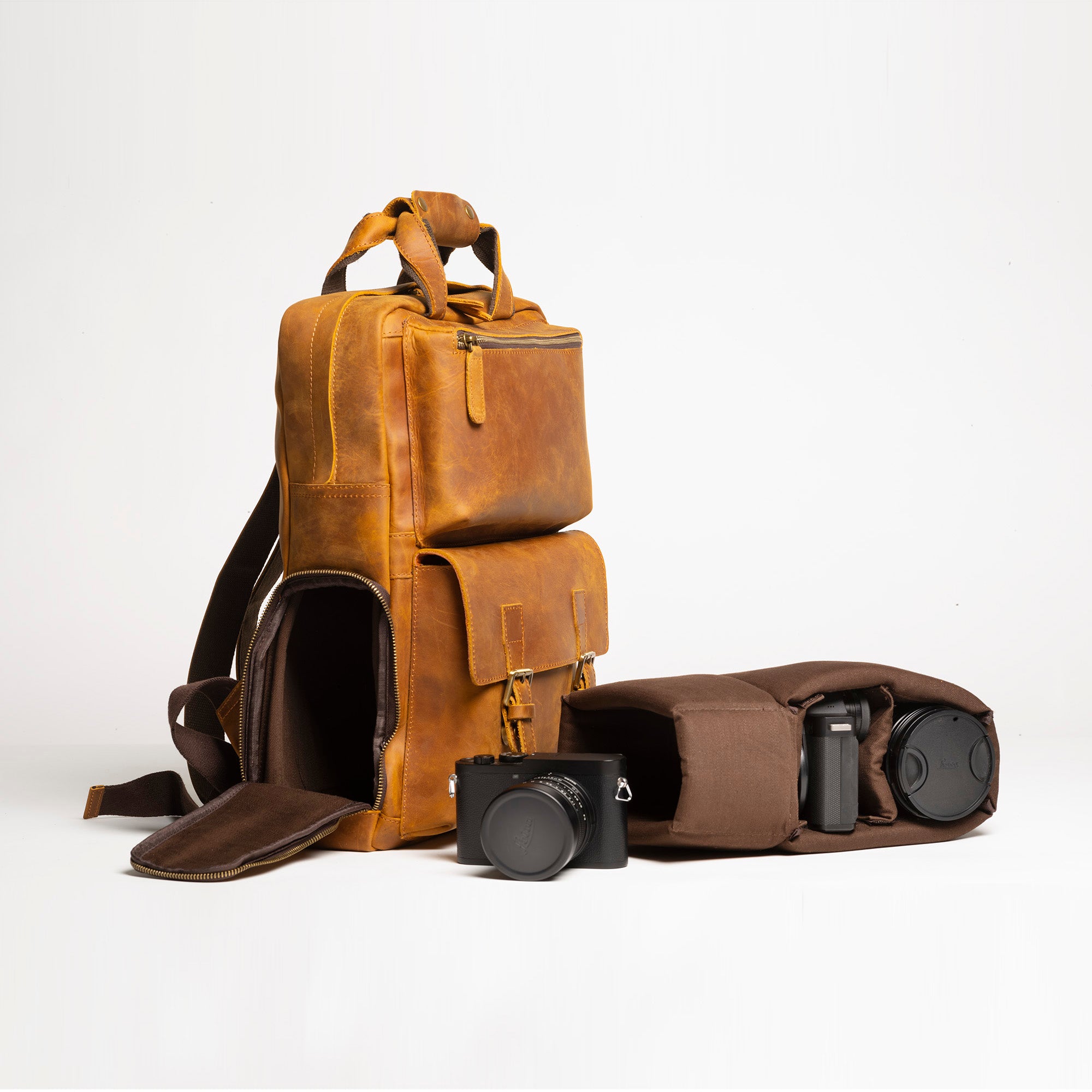
If you're in the market for a camera bag that offers durability and style, look no further than the MANN Bag. This handcrafted full grain leather camera bag is designed to provide you with the perfect combination of functionality and fashion. With its easy-access side-loading camera compartment and padded dividers, you'll have quick and easy access to your camera and accessories. The MANN Bag also features a dedicated padded sleeve for a 17' laptop, ensuring that you can bring all your gear with you in one convenient bag. Made of high-quality crazy horse leather, this bag is not only water-resistant but also incredibly durable. The MANN Bag truly is the best camera bag on the market.
Product Specs:
-
Handcrafted full grain leather camera bag
-
Easy-access side-loading camera compartment
-
Accommodates most compact cameras and SLR cameras with lenses attached
-
Padded camera compartment with dividers for quick and easy access
-
Dedicated padded sleeve for a 17' laptop
-
Made of high-quality crazy horse leather
-
Dimensions: 18.5 x 14 x 6 inches (47cm x 35cm x 15cm)
-
Weight: 3.85 lbs (1.75 kg)
-
Adjustable shoulder straps
-
Wrapped leather top handle
Pros:
-
Durable and stylish design
-
Easy access to camera and accessories
-
Accommodates a 17' laptop
-
Made of high-quality crazy horse leather
-
Water-resistant and long-lasting
Cons:
-
Slightly heavier compared to other camera bags
-
Limited color options
-
May be on the pricier side for some customers
The 5 Best Leather Bags for Your Camera Gear
Looking for a leather camera bag that not only protects your gear but also complements your style? Here are five top picks for you: The Endre Weekender, The Bjarke Weekender, The Vernon Backpack, The Brandt Weekender, and The Gaetano. These bags are crafted with high-quality leather, ensuring durability and longevity. With their spacious interiors and customizable compartments, you'll have no trouble organizing your camera gear and accessories.
The Endre Weekender
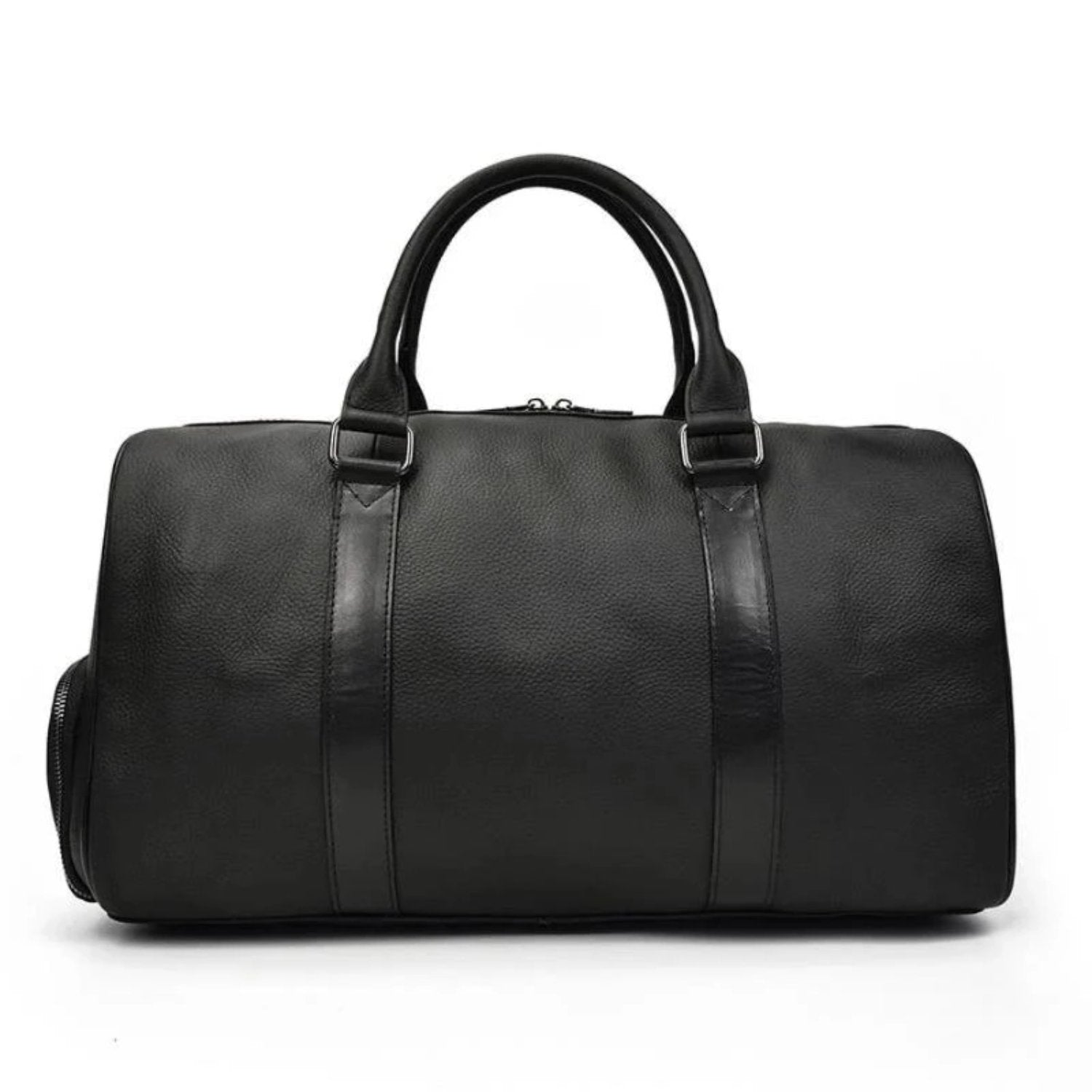
The Endre Weekender is the perfect leather camera bag for capturing your adventures on the go. Made from high-quality crazy horse leather, this bag not only provides excellent protection for your camera gear but also adds a touch of vintage style to your travel ensemble. The wax applied to the leather surface gives it an aged look, making each bag unique and beautiful. Its durability ensures that it will withstand the rigors of your adventures, and its resistance to water and other liquids keeps your gear safe even in unpredictable weather conditions. With its spacious interior and multiple compartments, the Endre Weekender can accommodate your camera, lenses, accessories, and personal items, making it a versatile and practical choice for any photographer on the move.
Product Specs:
-
Material: Crazy horse leather
-
Dimensions: 20" x 9" x 11"
-
Weight: 4.4 lbs
-
Color options: Brown, black
Pros:
-
Vintage and stylish design
-
Durable and long-lasting
-
Spacious interior with multiple compartments
-
Water and liquid-resistant
-
Provides excellent protection for camera gear
Cons:
-
May be heavy when fully loaded
-
The leather may develop scratches and scuffs over time
-
Limited color options
The Bjarke Weekender
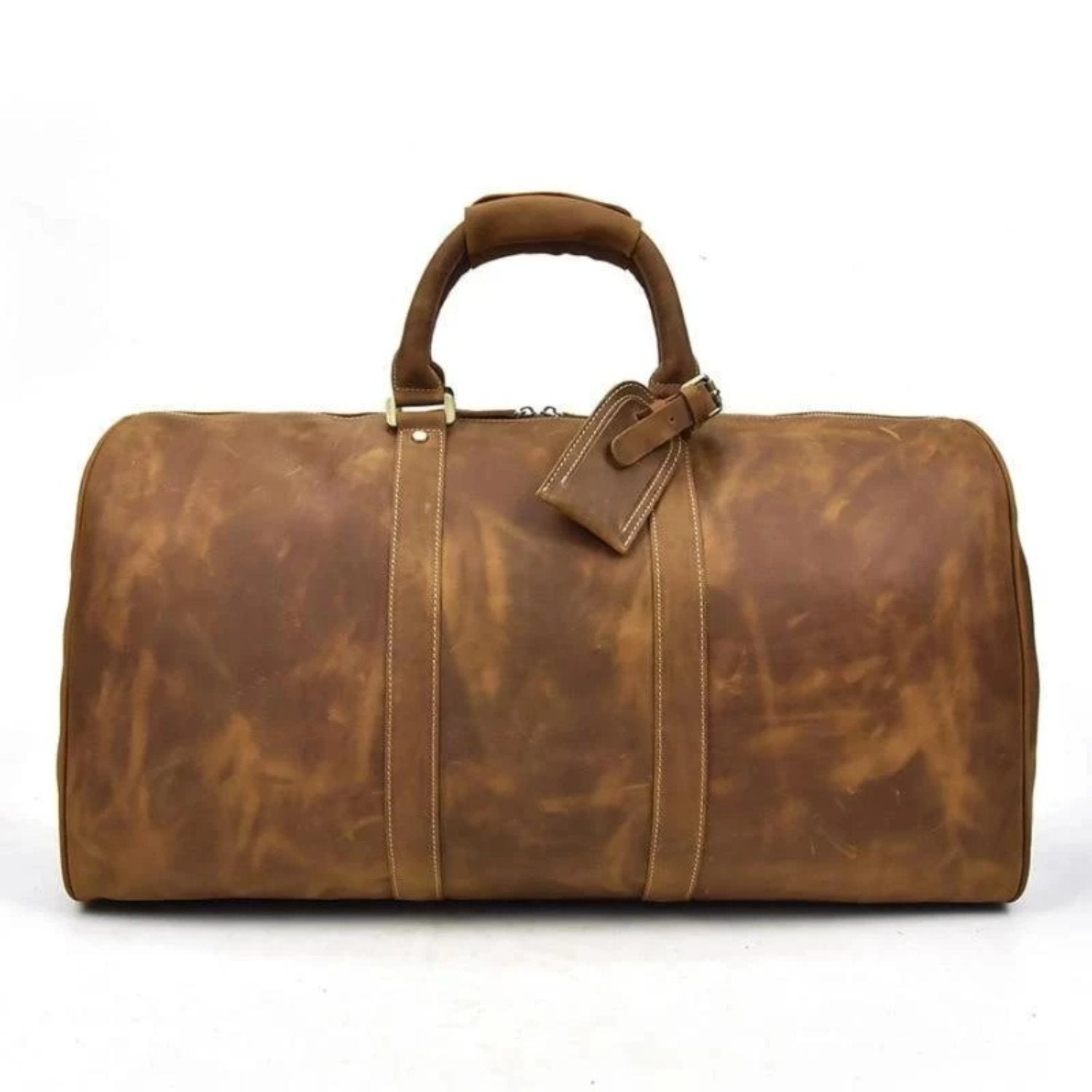
When it comes to protecting and transporting your camera gear, the Bjarke Weekender stands out for its exceptional durability and stylish design. This leather bag is designed to provide the utmost protection for your valuable items, making it perfect for photographers on the go. The Bjarke Weekender featuresca a large main compartment with soft leather handles for comfort, as well as a 14-inch laptop storage sleeve. Its subtle design, with overlaid quality leather and stitched leather bars, adds a touch of elegance to its rugged construction. Made of high-quality crazy horse leather, this bag is not only strong and durable, but also resistant to water and moisture-related damages. Over time, the bag develops a vintage and antique appearance, with scratches and changes in shades of color adding character.
Product Specs:
-
Material: High-quality crazy horse leather
-
Dimensions: 23.6 x 11.8 x 11.8 inches (60cm x 30cm x 30cm)
-
Weight: 5.3 lbs (2.4 kg)
-
Shoulder strap length: 57 inches (145cm)
-
Interior: 1 large main compartment, 1 zipped pocket, 3 open object pockets
Pros:
-
Exceptional durability
-
Stylish design
-
Provides excellent protection for camera gear
-
Features a 14-inch laptop storage sleeve
-
Comfortable to carry with soft leather handles
Cons:
-
Relatively heavy at 5.3 lbs (2.4 kg)
-
Limited color options
-
May require occasional leather care and maintenance to preserve its appearance and functionality.
The Vernon Backpack
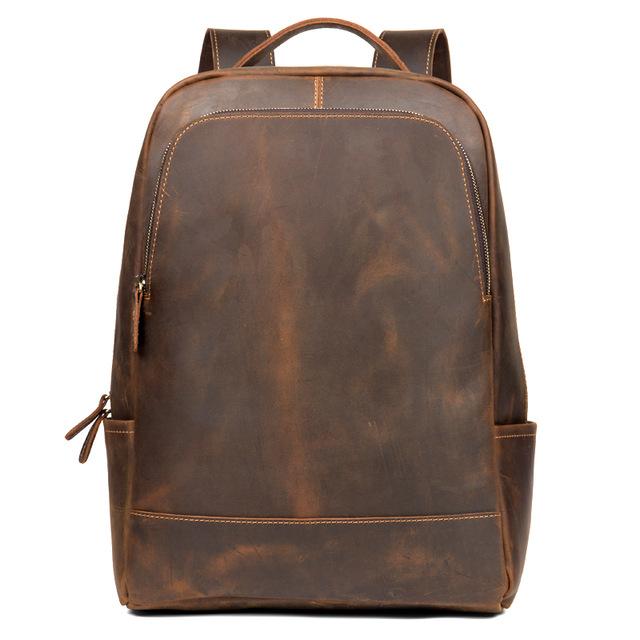
With its roomy main compartment and exterior pocket, the Vernon Backpack offers photographers a spacious and convenient option for carrying their camera gear. Made of high-quality crazy horse leather, this backpack not only provides durability but also gives a unique and stylish look. The adjustable shoulder straps and grab handle provide multiple carrying options, ensuring comfort and flexibility while on the go. The roomy main compartment can securely hold a 15' laptop, while the exterior pocket allows for quick and easy access to smaller items. The Vernon Backpack is designed to distribute weight evenly across the back, reducing strain and discomfort. With its combination of functionality, style, and sustainability, the Vernon Backpack is a top choice for photographers looking for a reliable and fashionable camera bag.
Product Specs:
-
Material: High-quality crazy horse leather with polyester lining
-
Dimensions: 16.9 x 11.8 x 5.1 (43x 30cm x 13cm)
-
Weight: 3.3 pounds (1.7 kg)
-
Fits: 15' laptop compartment
Pros:
-
Spacious main compartment and exterior pocket for easy organization
-
Adjustable shoulder straps and grab handle for comfortable carrying options
-
Durable and stylish crazy horse leather material
Cons:
-
Each bag is unique with slightly different color due to natural material
-
Weight of the bag may be a bit heavy for some users
-
Shipping times for international orders may vary
The Brandt Weekender
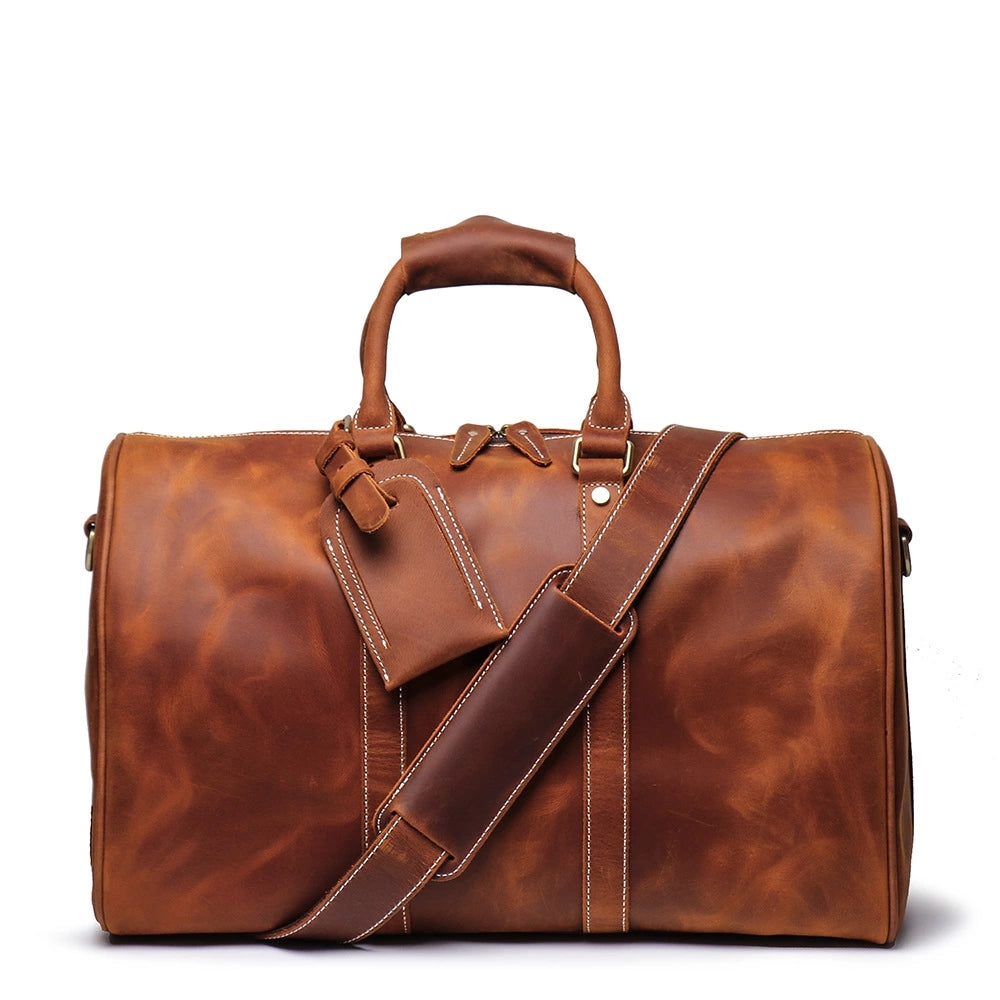
To truly enhance your photography experience, consider the Brandt Weekender, a versatile leather camera bag that seamlessly combines style and functionality. This bag is perfect for photographers who want to carry their camera gear in a bag that not only looks great but also provides ample protection. The Brandt Weekender is made of high-quality crazy horse leather, which gives it a unique retro and vintage look that ages beautifully over time. The wax coating on the leather provides excellent protection against water and other liquids, ensuring that your gear stays safe and dry. With its durable construction and resistance to wear and scratches, this bag is built to last.
Product Specs:
-
Made of high-quality crazy horse leather
-
Wax coating for water and liquid protection
-
Durable and resistant to wear and scratches
Pros:
-
Stylish and unique retro look
-
Ample protection for camera gear
-
Durable construction
Cons:
-
Slightly heavier compared to other materials
-
Requires regular maintenance to maintain its appearance
-
Limited color options available
The Gaetano
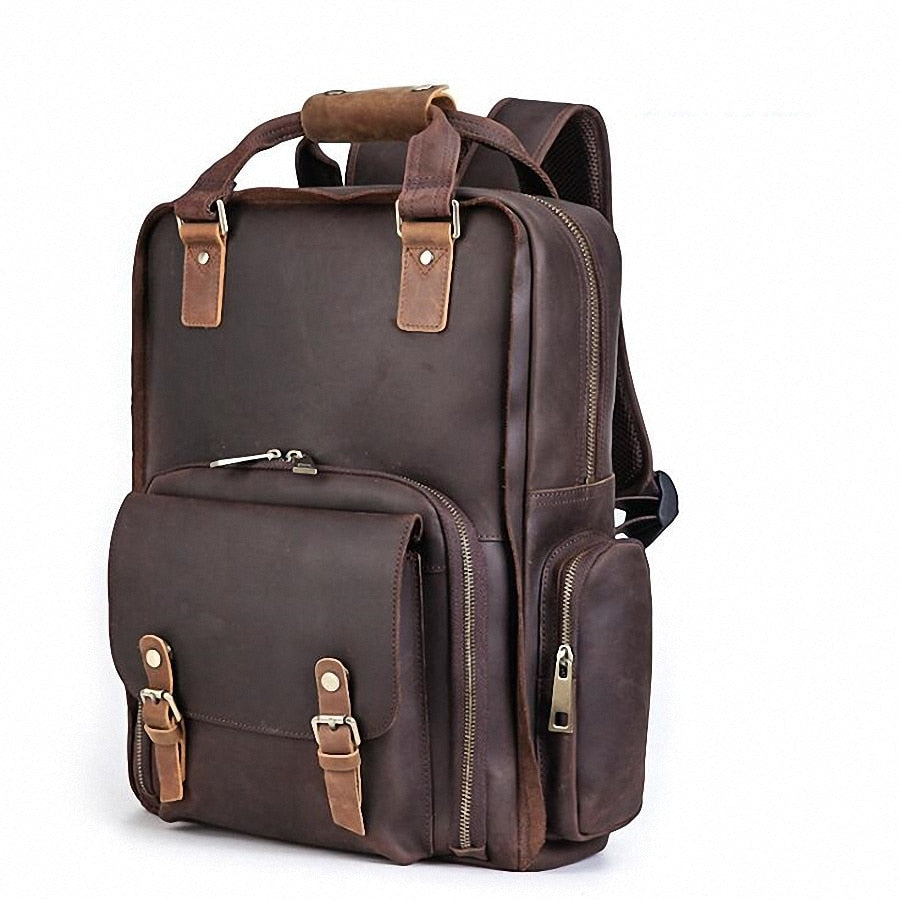
If you frequently travel with your camera gear, you'll appreciate the versatility and durability of The Gaetano, one of the top five leather bags for your camera gear. This large leather backpack camera bag is designed to provide quick and easy access to your equipment while keeping it safe and secure. With features like a quick-access pocket on the side, removable camera packet, and quick access camera pockets, you can conveniently grab your gear whenever you need it. The Gaetano also offers ample storage for lenses and accessories, with dedicated compartments for a 15.6' laptop and larger zoom lenses. Made of high-quality crazy horse leather, this bag not only looks stylish and vintage but also ages beautifully over time. It is highly resistant to water and other liquids, protecting your gear even in unpredictable weather conditions. The Gaetano is a reliable companion for photographers on the go, providing both functionality and style.
Product Specs:
-
Dimensions: 17 x 12.6 x 5.5 inches (43cm x 32cm x 14cm)
-
Weight: 3.85 lbs (1.75 kg)
-
Adjustable shoulder straps with additional padding
-
Wrapped leather top handle
-
Exterior: 1x Quick Access Camera Equipment Compartment 7.5 x 7.5 inches
-
Exterior: 1x Front quick snap pocket
-
Exterior: 1x Side zippered pocket and 1x Side open pocket
-
Interior: Laptop sleeve, interior zippered pockets, and dedicated card holder pocket
-
Interior: Removable interior padded camera packet
Pros:
-
Quick and convenient access to camera gear
-
Ample storage for lenses and accessories
-
High-quality crazy horse leather for durability and style
-
Water-resistant and protects gear in unpredictable weather conditions
-
Adjustable shoulder straps and additional padding for comfort
Cons:
-
Relatively heavy compared to other camera bags
-
Limited color options
-
The vintage look may not be appealing to everyone
Frequently Asked Questions
How Do Leather Camera Bags Contribute to Sustainability?
Leather camera bags contribute to sustainability in several ways, making them an exceptional choice for eco-conscious consumers. They are durable and long-lasting, reducing the need for frequent replacements and supporting a circular economy approach. This helps to minimize waste and reduce the environmental impact of manufacturing new bags. Leather is also a natural material that can be sourced responsibly through ethical practices, supporting sustainable farming and ranching practices while reducing the overall carbon footprint. Additionally, high-quality leather bags can be recycled or repurposed, further extending their lifespan and reducing waste. The leather industry is increasingly adopting sustainable practices and eco-friendly materials to minimize environmental consequences. So, choosing a leather camera bag is a sustainable choice that combines timeless style and environmental consciousness while making a positive community impact.
What Is the Environmental Impact of Leather Camera Bags?
The environmental impact of leather camera bags is an important aspect to consider for informed choices. Traditional leather production can have negative effects on the environment, such as deforestation, water pollution, and significant water consumption. The carbon impact from the meat industry and beef industry also contributes to greenhouse gas emissions. Additionally, the tanning process uses harmful chemicals and toxic chemicals that can be harmful to aquatic life if not properly managed through environmental regulations. However, it's worth noting that some leather camera bag manufacturers are taking steps to mitigate these impacts by using sustainably sourced raw material, adopting eco-friendly tanning methods, and implementing chrome-free tanning methods. The shift toward sustainable materials and eco-friendly alternatives represents a commitment to sustainability in the fashion industry. So, while leather camera bags may have some environmental footprints, there are efforts being made to minimize the environmental cost and support a sustainable future.
How Is Sustainable Leather Beneficial for the Environment?
Sustainable leather is beneficial for the environment in several ways, playing a pivotal role in environmental sustainability. First, it supports responsible practices and ethical production, ensuring that animals receive humane treatment and fair labor practices are maintained. Second, the tanning process uses natural materials and eco-friendly practices that are less harmful to the environment compared to traditional methods, reducing chemical usage and promoting environmentally-friendly practices. Third, sustainable leather encourages recycling and upcycling through recycled materials and recycled leather manufacturing, reducing waste and extending the lifespan of the durable material while supporting a circular economy. Finally, it promotes local economies and supports artisans who create quality products with exceptional craftsmanship, contributing to community development. The use of alternative materials and biodegradable materials in the manufacturing process helps reduce microplastic pollution. Overall, sustainable leather contributes to a more eco-friendly and socially conscious approach to sustainable fashion while considering future generations.
How Can I Choose Ethically Sourced Leather for My Camera Bag?
To choose ethically sourced leather for your camera bag, start by researching brands that prioritize sustainability and demonstrate environmental responsibility. Look for certifications like the Leather Working Group or Fair Trade labels that ensure fair trade practices and ethical sourcing. Ask questions about their approach to leather sourcing practices, leather supply chain transparency, and ensure they support animal welfare through the ethical treatment of animals. Consider the types of leather available, including full-grain leather and grain leather, which offer superior quality and durability. Examine their manufacturing process for eco-friendly tanning processes and environmentally-friendly practices. Remember, "you are what you buy, so buy responsibly." By making conscious choices and informed decisions with careful consideration, you can contribute to a more sustainable and ethical fashion industry while supporting a greener planet.
What Are the Advantages of Opting for Vegetable-Tanned Leather?
Opting for vegetable-tanned leather has several advantages, making it an ideal choice for fashion enthusiasts seeking sustainable options. Firstly, it is an eco-friendly choice and sustainable alternative as it uses natural tannins from plants through vegetable tanning, instead of harmful chemicals used in chrome tanning. This eco-friendly tanning process significantly reduces the ecological footprint compared to chrome-tanned leather. Secondly, this high-quality leather is more durable and develops a beautiful patina and antique appearance over time, representing timeless designs that transcend fashion trends. Thirdly, it is biodegradable, reducing its impact on the environment and supporting environmental sustainability. The finished product often features innovative features and functional accessories, including ample storage space, laptop compartment, and easy-access side-loading camera compartment for convenient carrying options. Vegetable-tanned leather also offers protection from abrasive materials and requires only regular cleaning for maintenance. Lastly, this natural leather is often sourced from ethically-raised animals through responsible practices, ensuring that sustainability and animal welfare are prioritized while avoiding the use of fossil fuels in production. The time-tested leather represents exceptional quality and durable construction, making it a sustainable option for those seeking cruelty-free alternatives to synthetic materials or faux leather. When choosing a camera bag, consider the benefits of vegetable-tanned leather as both functional leather satchel and fashionable accessories that align with your personal style and values for environmental responsibility.
For photographers seeking the perfect accessory for photographers, these sustainable leather products offer ample storage capacity, laptop storage sleeve, and comfortable carrying options while supporting ethical craftsmanship among artisans. The integration of technology in modern designs, combined with traditional methods and innovative technologies, creates quality products that serve both as fashion statements and practical tools. By choosing genuine leather over vegan leather alternatives or plant-based leathers, consumers can make eco-conscious choices that support the sustainable fashion industry while enjoying the superior quality and timeless style of real leather. This conscious decision represents a holistic approach to sustainable choices that benefit both the individual and the healthier planet we all share.
The initial cost of high-quality materials may be higher, but the long-lasting nature of these durable products provides exceptional value and reduces the need for frequent replacements, ultimately supporting a lease on life philosophy and contributing to reduced environmental degradation for future generations.
Conclusion
In conclusion, choosing a leather camera bag can contribute to sustainability by opting for ethically sourced and vegetable-tanned leather, as well as upcycling and using recycled materials. These eco-conscious choices not only support earth-friendly practices but also ensure durability for longevity. Did you know that by using sustainable leather, you can reduce your carbon footprint by up to 50% compared to conventional leather production methods? So, make a stylish and environmentally friendly choice with a leather camera bag today!
Sustainable Leather Camera Bag Impact Calculator
Discover how choosing sustainable leather camera bags can reduce your environmental footprint. This interactive tool compares the environmental impact of different leather sourcing and production methods, helping you understand the real benefits of eco-conscious choices discussed in our article. See how factors like vegetable tanning, local production, and durability affect your bag's overall sustainability score.





















